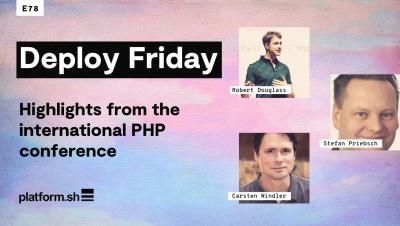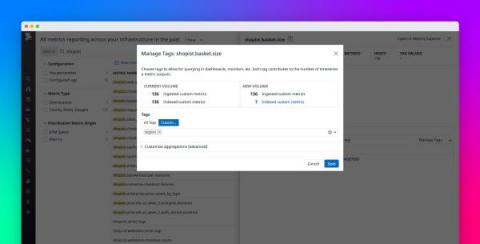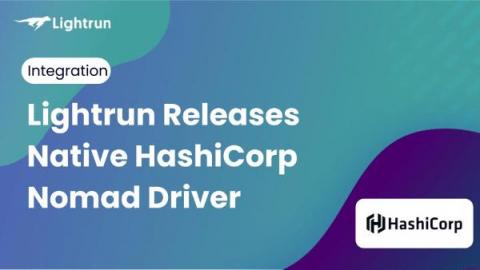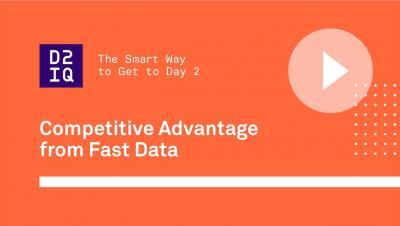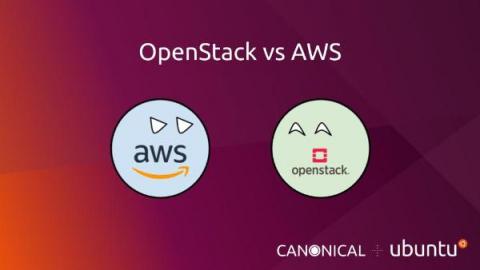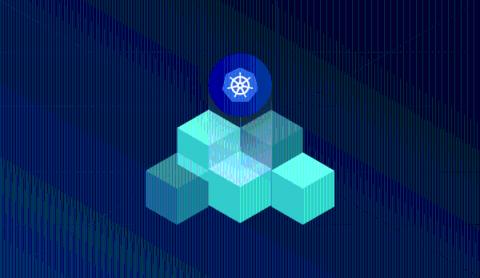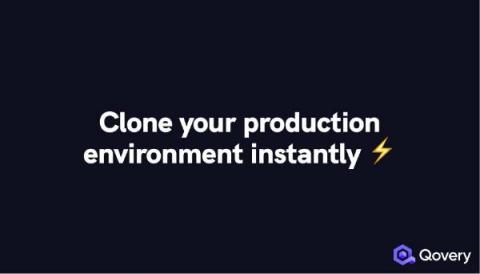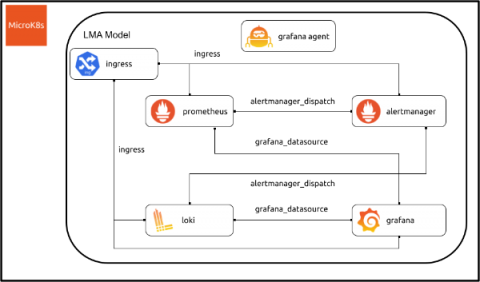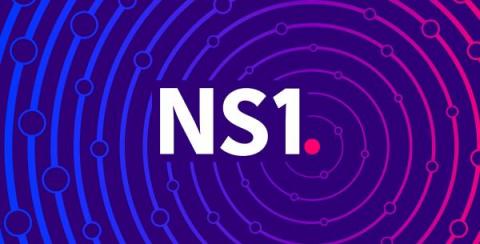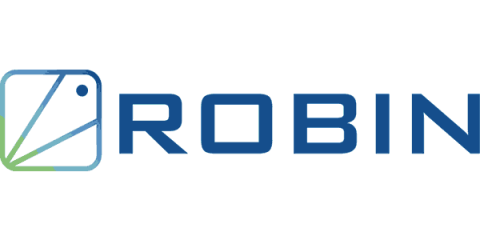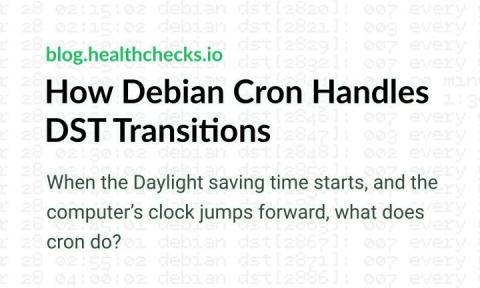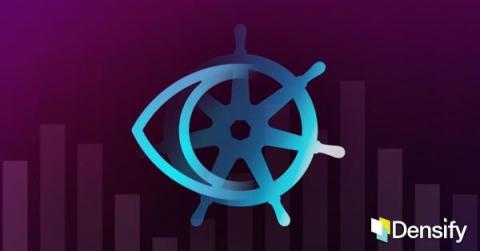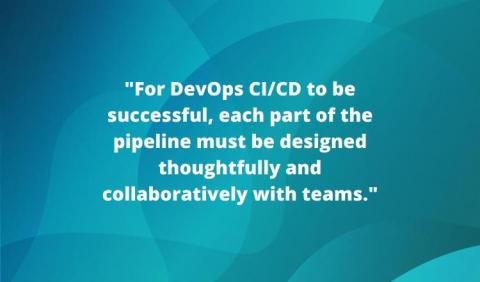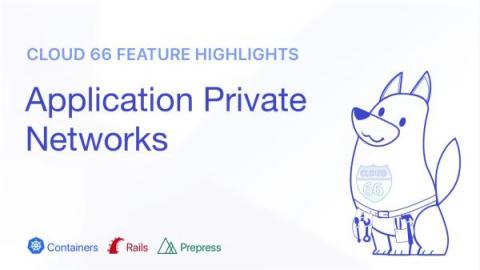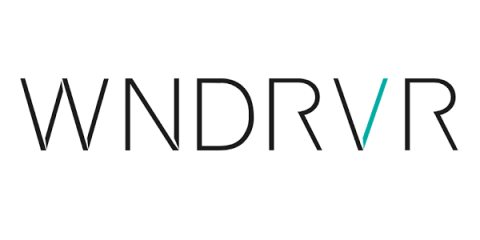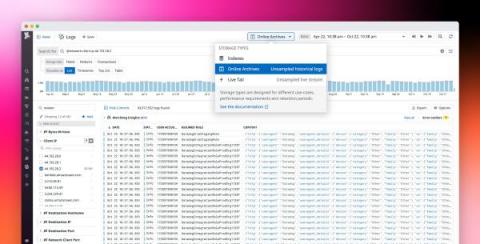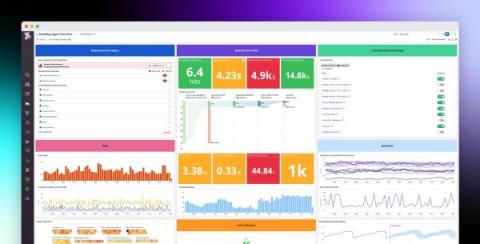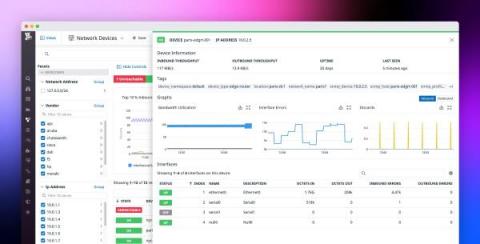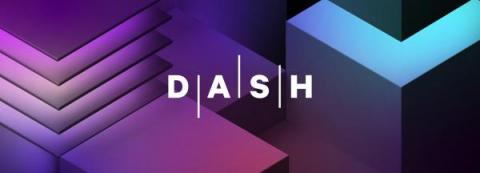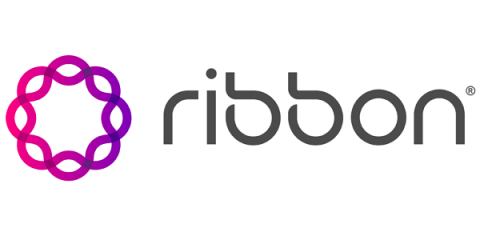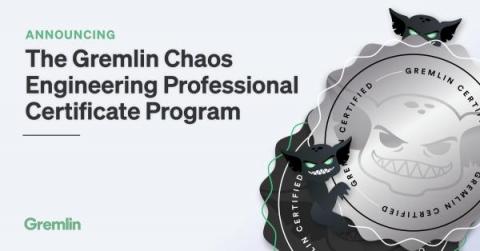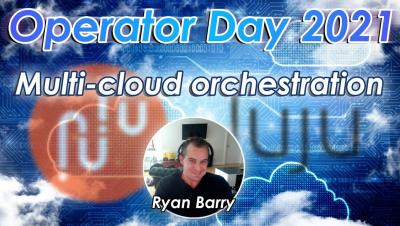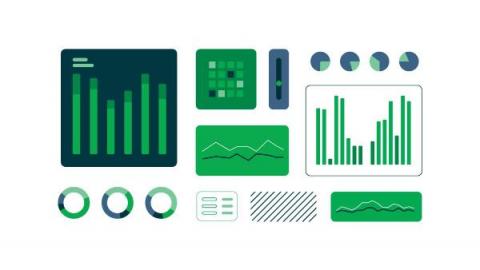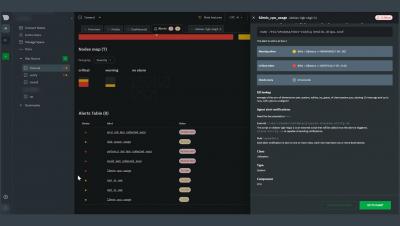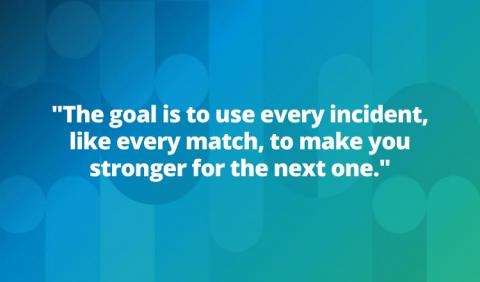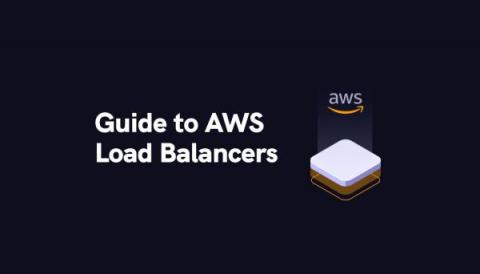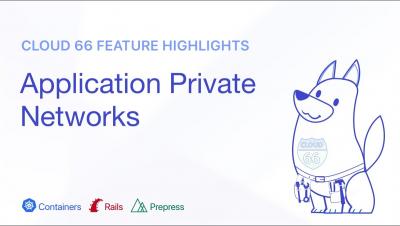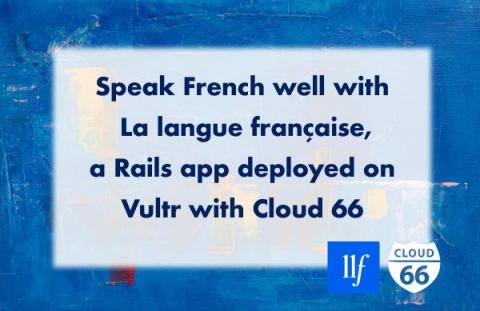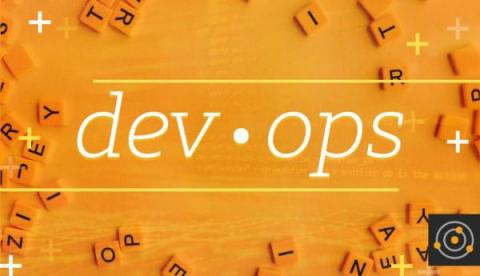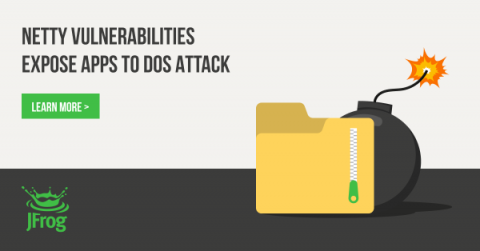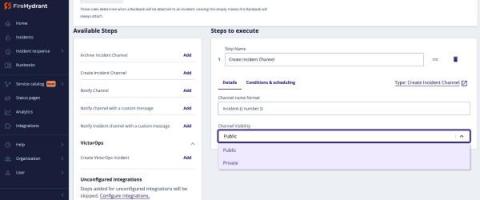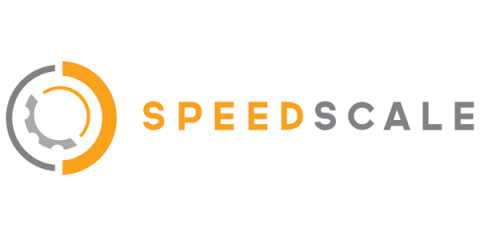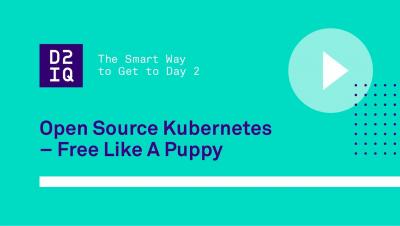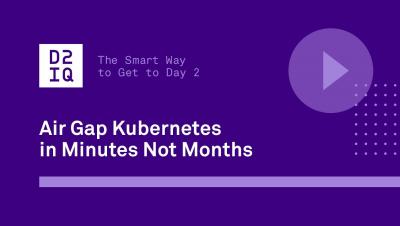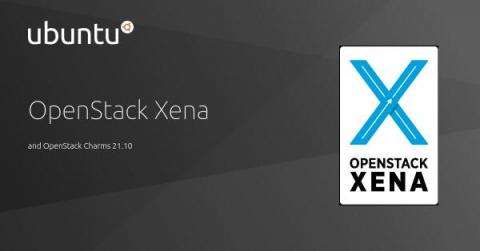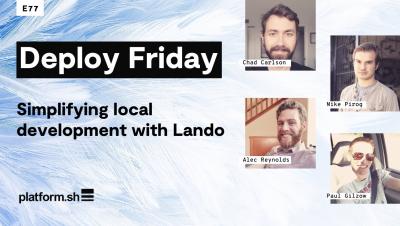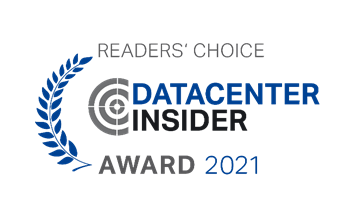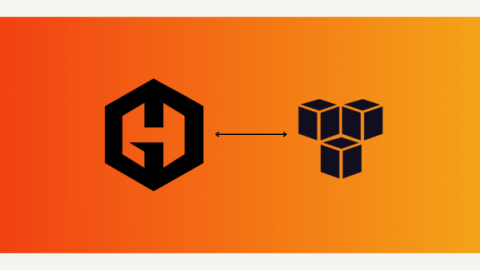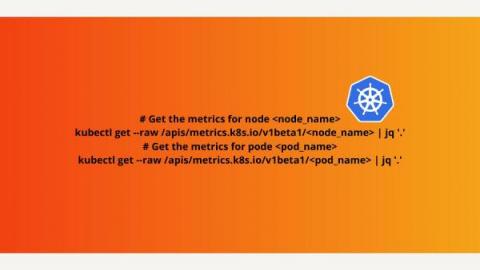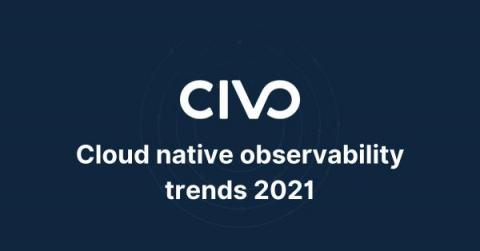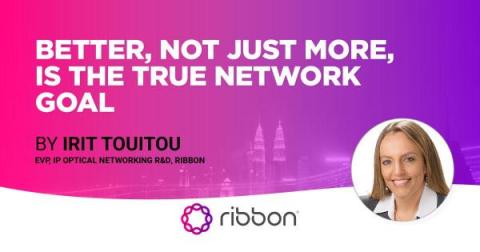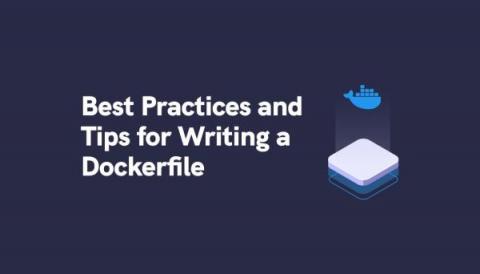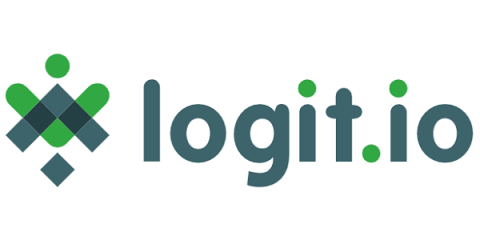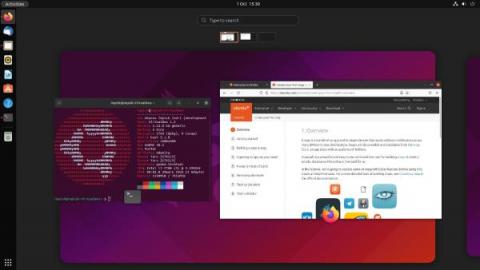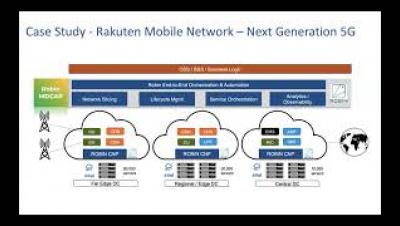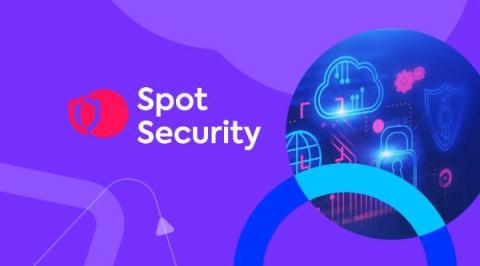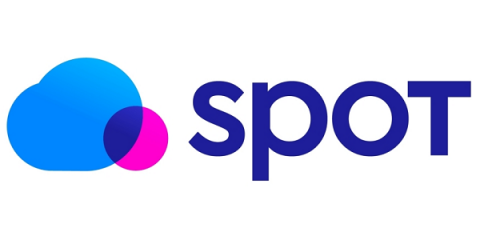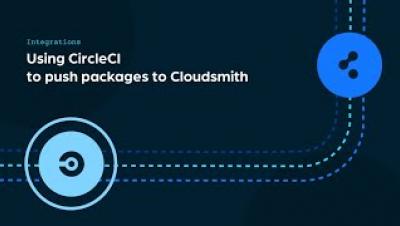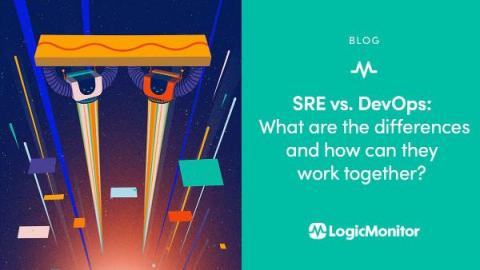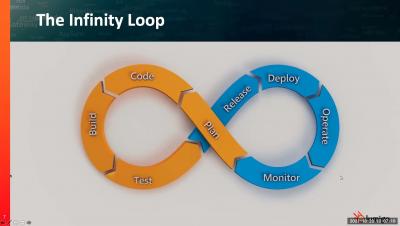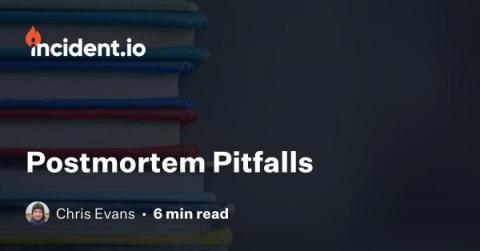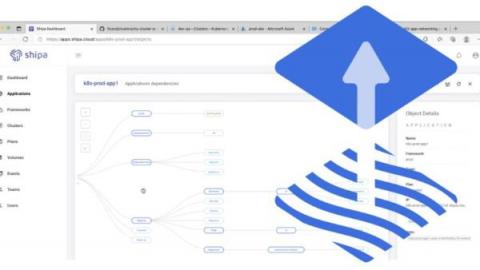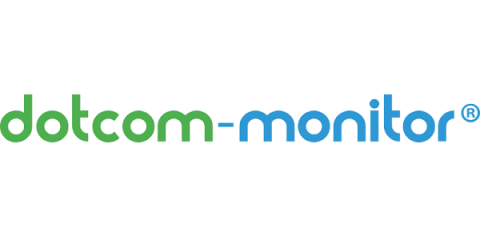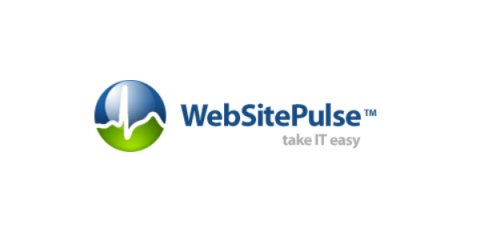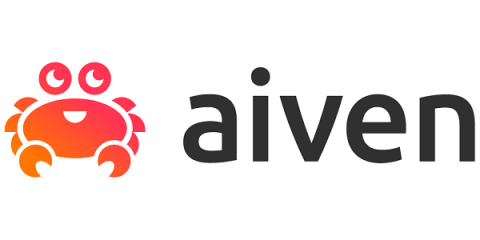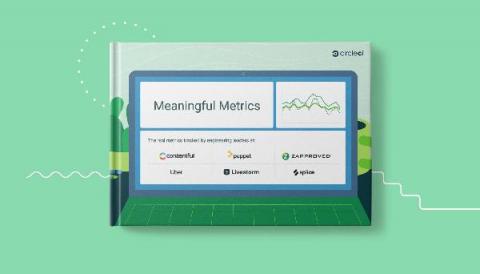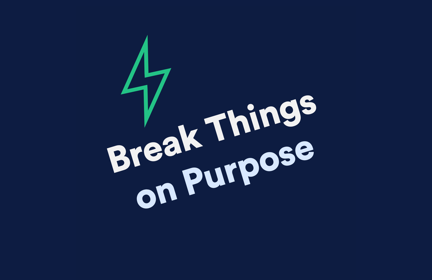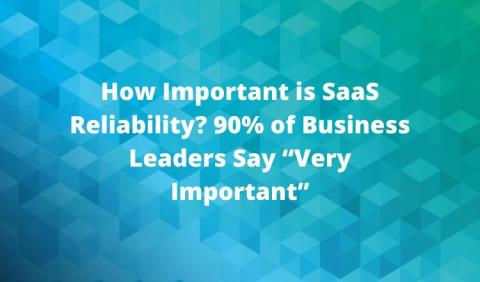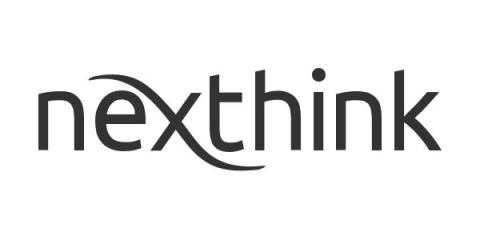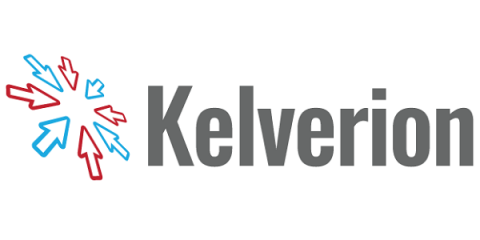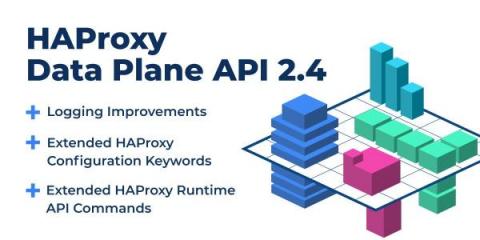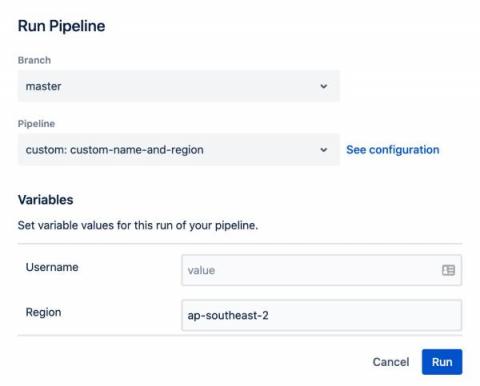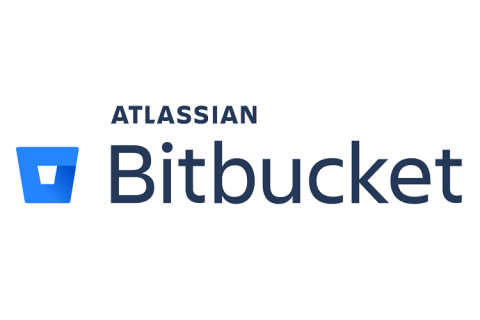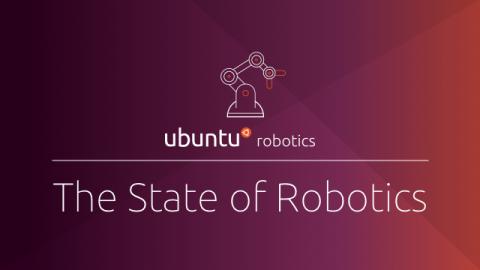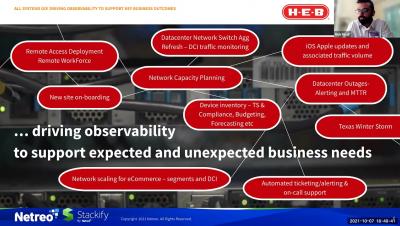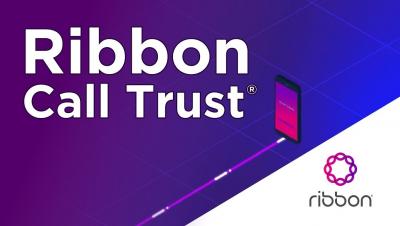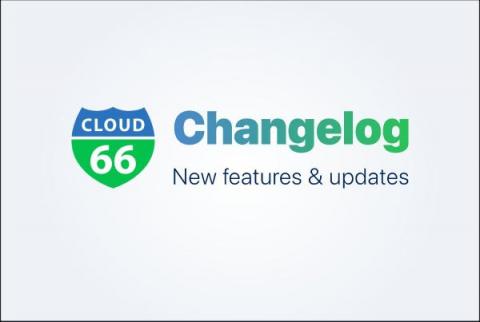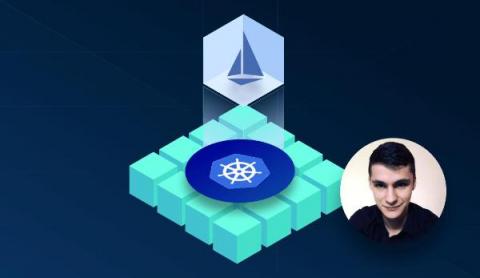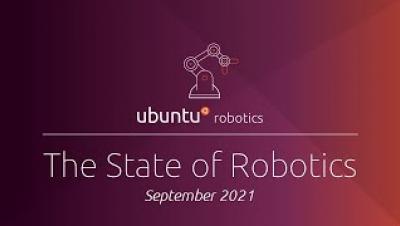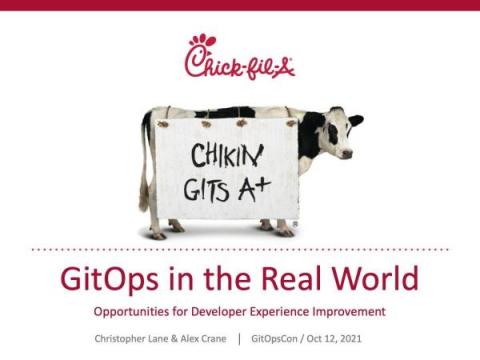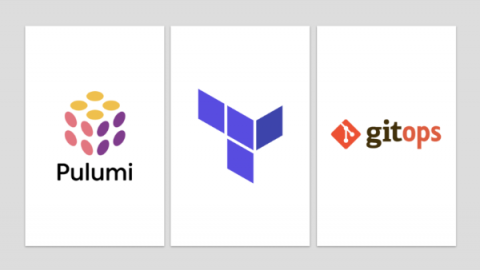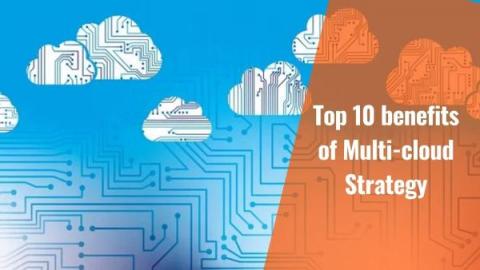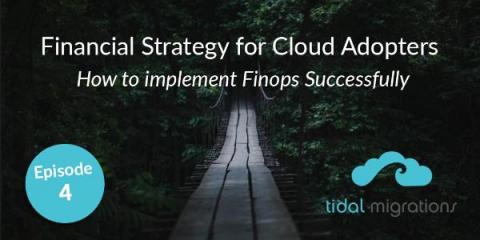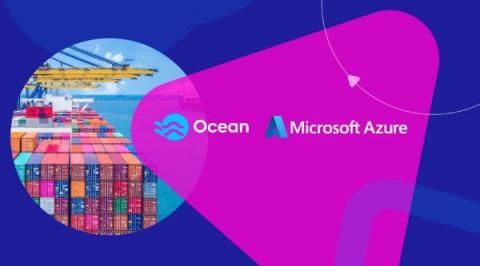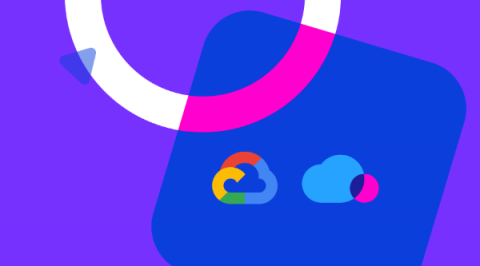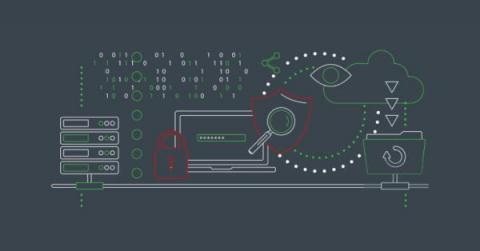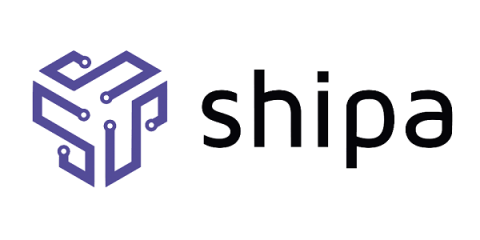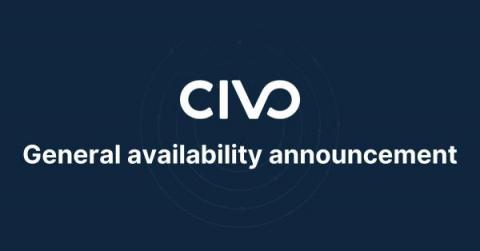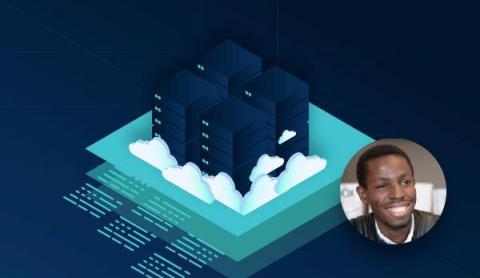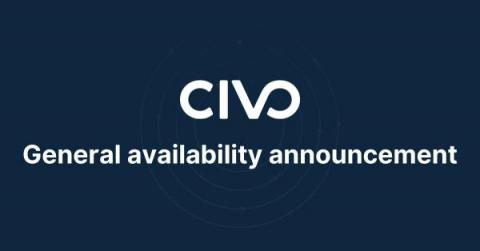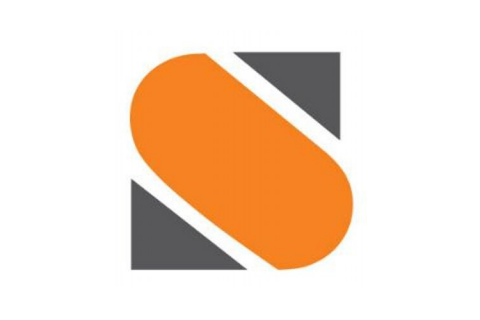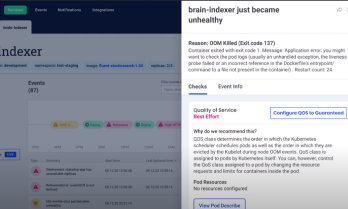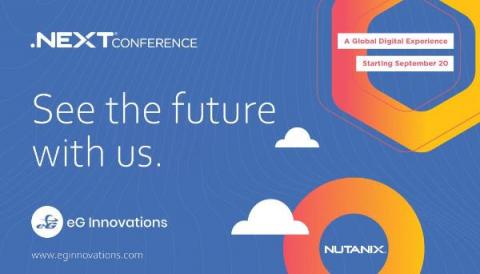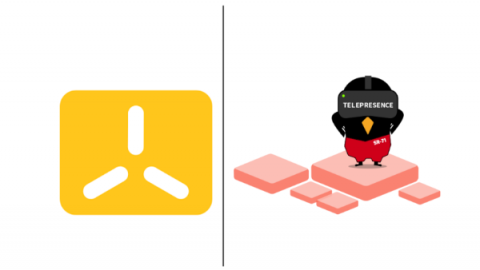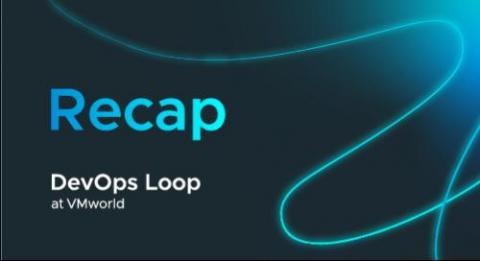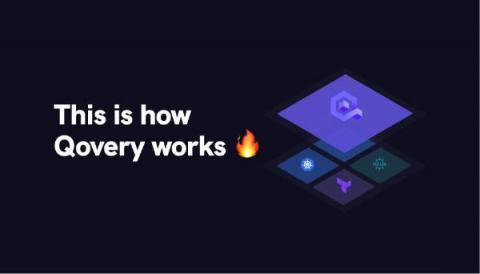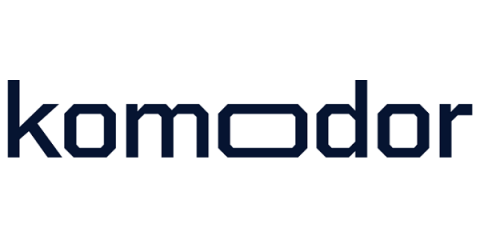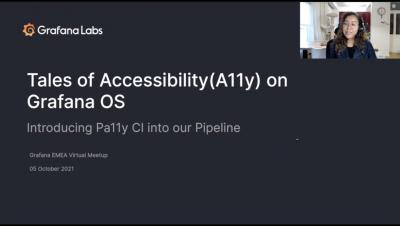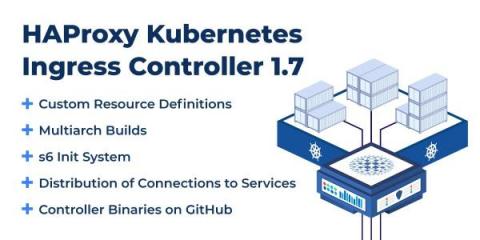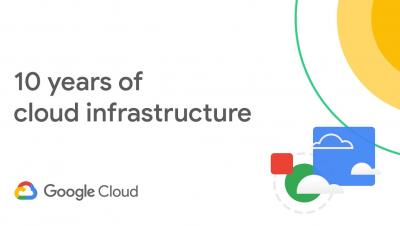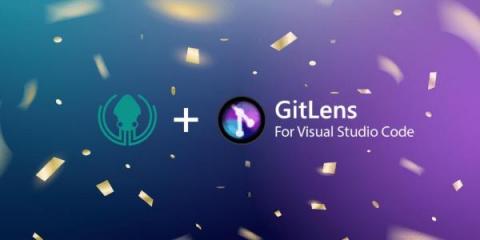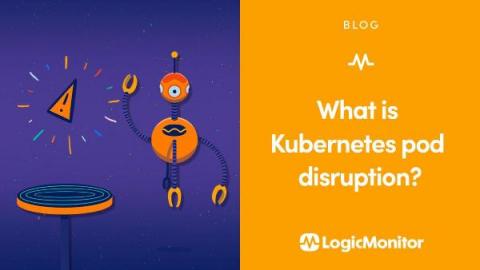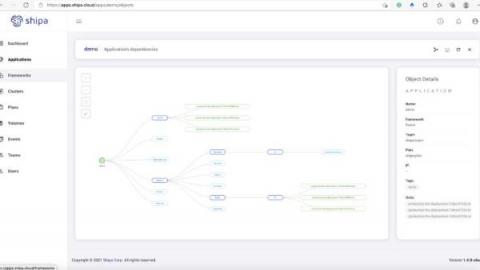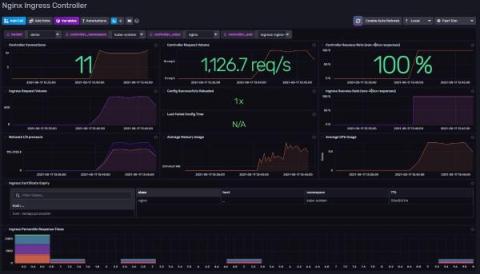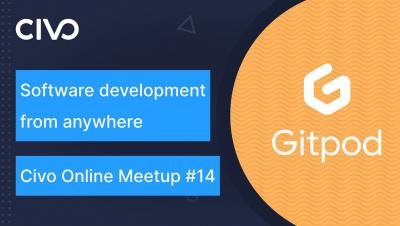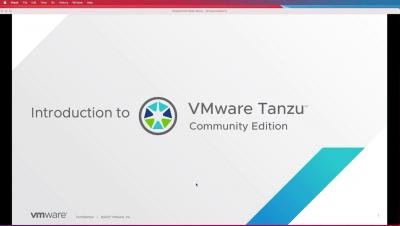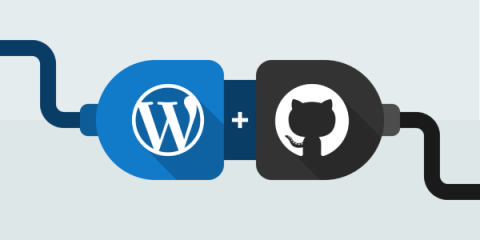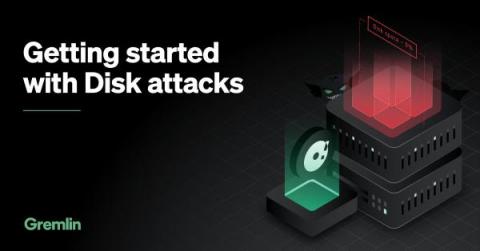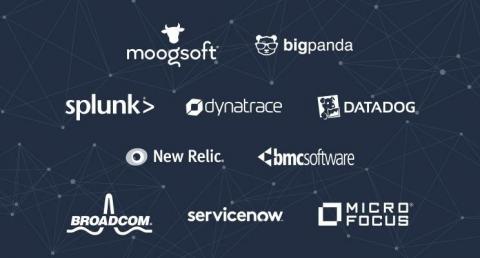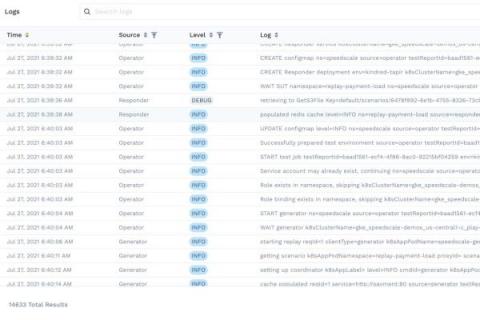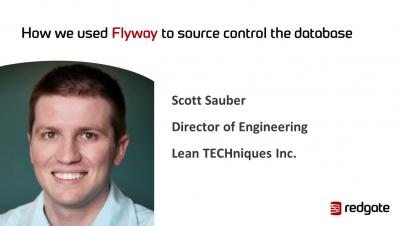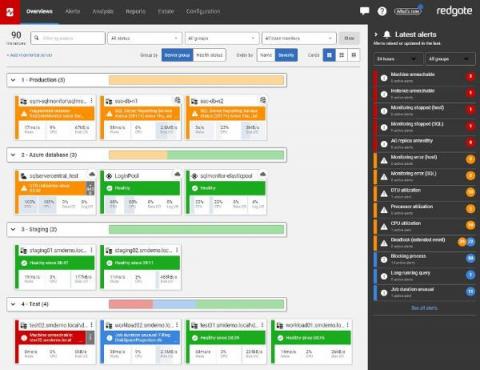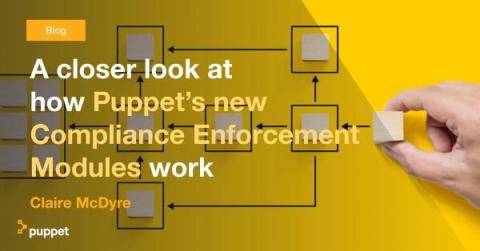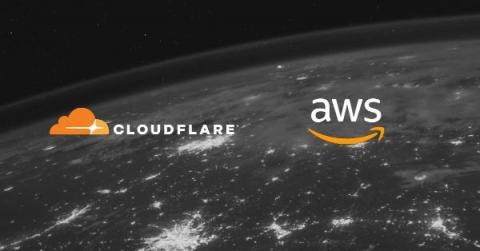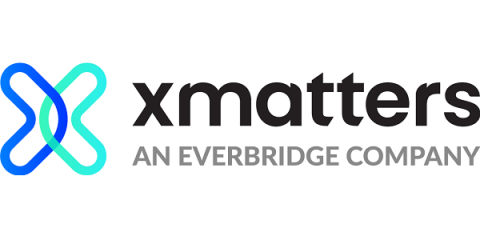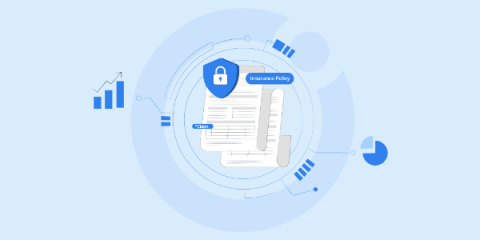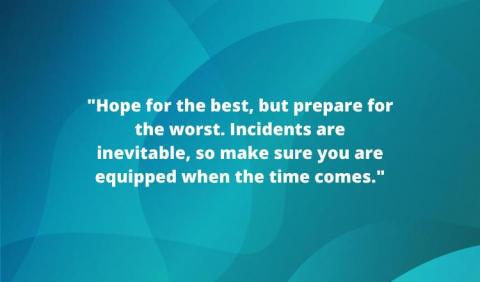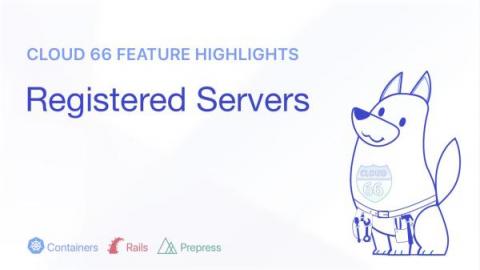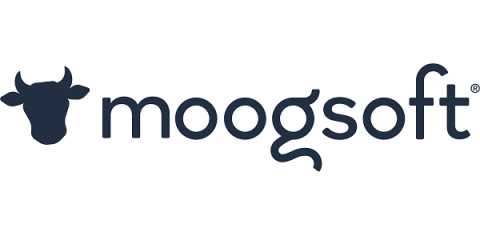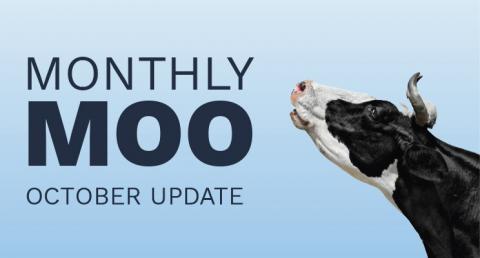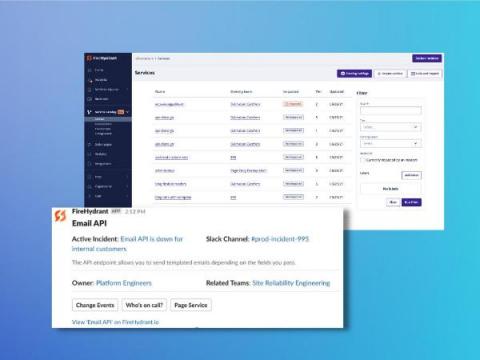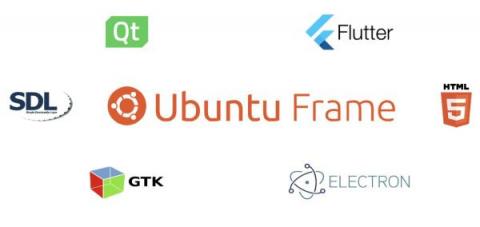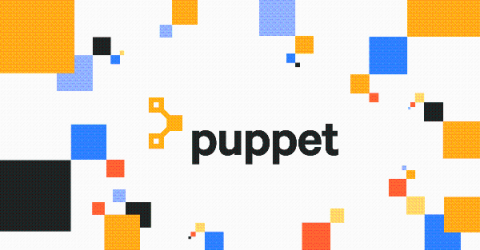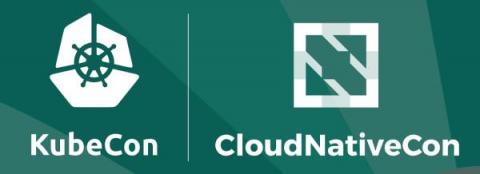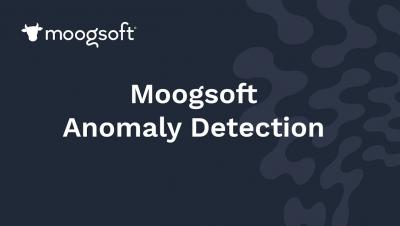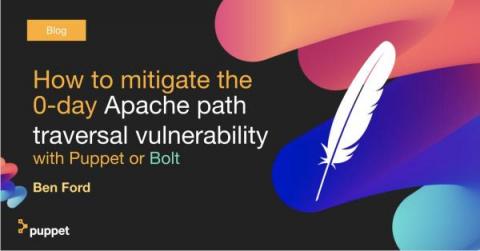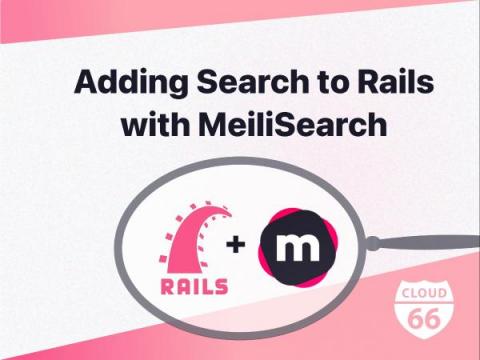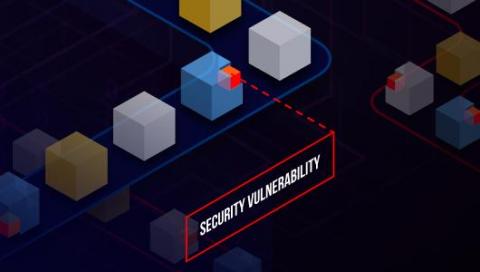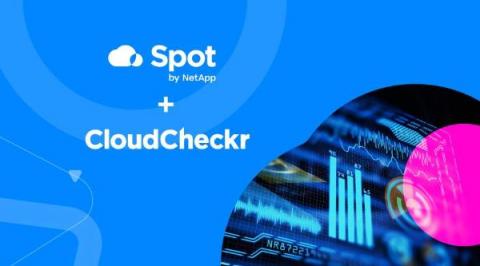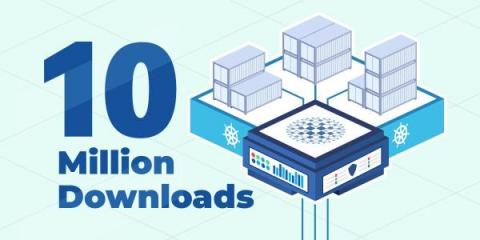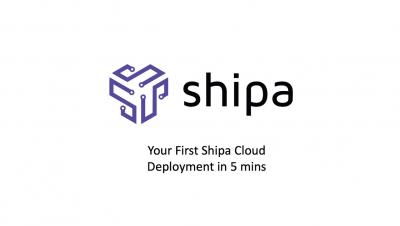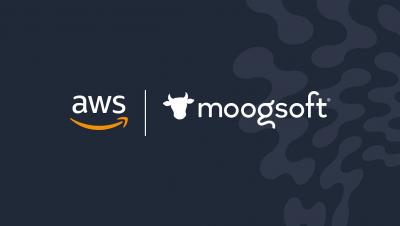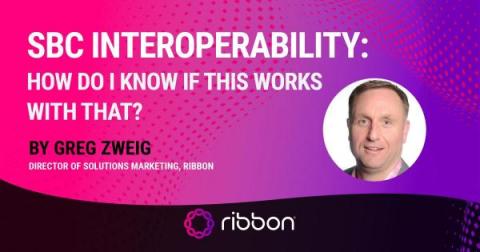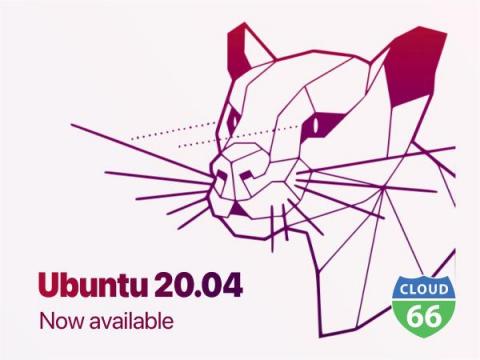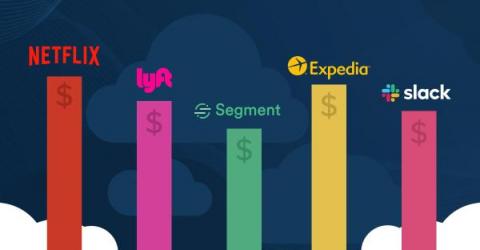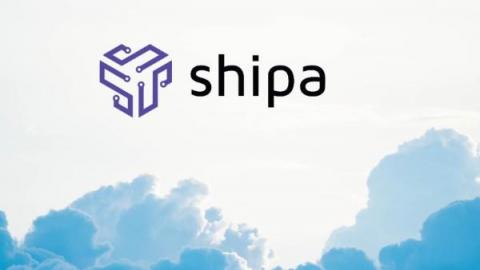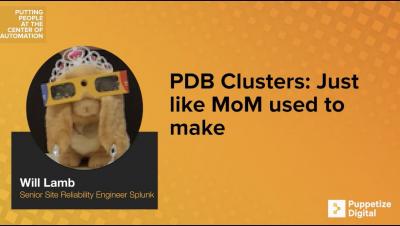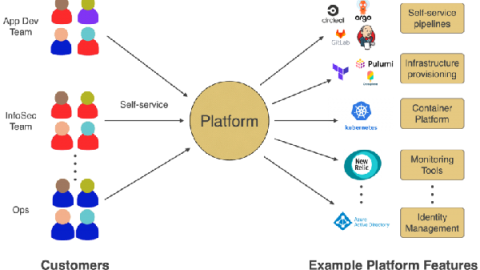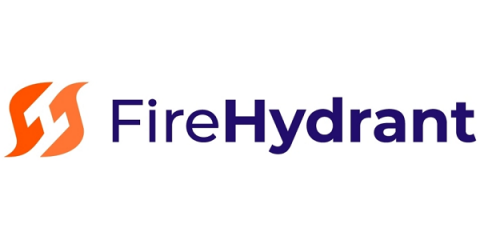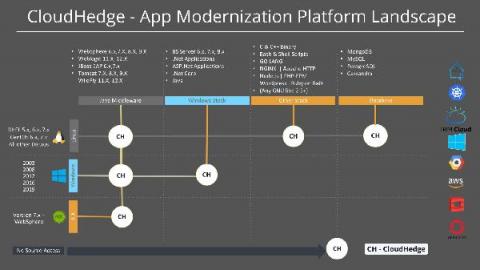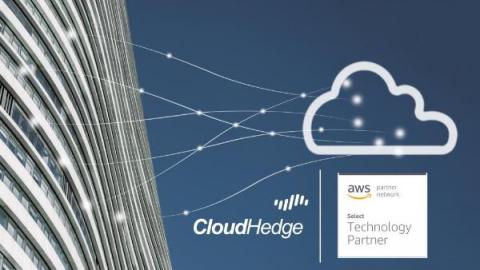Operations | Monitoring | ITSM | DevOps | Cloud
October 2021
Deploy Friday: E78 Highlights from the international PHP conference
Dynamically control your custom metrics volume with Metrics without Limits
Sending custom metrics to Datadog allows you to monitor important data specific to your business and applications, such as latency, dollars per customer, items bought, or trips taken. And tags are key to being able to slice and dice these custom metrics to quickly find the information you need. But collecting enough custom metrics to have complete visibility can be cost prohibitive. For example, you might run microservices instrumented across thousands of containers.
Continuous deployment of Node apps to Heroku
CircleCI orbs are reusable packages of YAML configuration that condense repeated pieces of config into a single line of code. Since its launch in 2018, the CircleCI orbs registry has been used by developers, development teams, and by companies who want to help developers integrate their services seamlessly into continuous integration pipelines. In this tutorial, we will show how to use CircleCI orbs to continuously deploy a Node.js application to Heroku, one of the most popular hosting platforms.
Creating the ideal dev experience with Pulumi's Kat Cosgrove & Matt Stratton
Developers Can Now Debug Running Nomad-Orchestrated Applications Using Lightrun
In basically every modern software organization, building software is not just a matter of writing code – it’s a matter of testing it to ensure it works properly, a matter of creating artifacts out of it that can be used by the end customers, and a matter of deploying them to a customer-accessible location for these customers to be able to actually use it.
SOC2 Certification
Speedscale Inc. has achieved SOC 2 Type I compliance in accordance with American Institute of Certified Public Accountants (AICPA) standards for SOC for Service Organizations also known as SSAE 18. Achieving this standard with an unqualified opinion serves as third-party industry validation that Speedscale Inc. provides enterprise-level security for customer’s data secured in the Speedscale Inc. System. Speedscale Inc.
SRE vs. SWE: Similarities and Differences
SREs and SWEs complement each other, but they perform different tasks and focus on different priorities.
ML/AI In Hours Not Months
Competitive Advantage from Fast Data
What Is AWS Anomaly Detection? (And Is There A Better Option?)
Site Reliability Engineer (SRE) Roles and Responsibilities
Software development is getting faster and more complex – frustrating IT operations teams more than ever. So, DevOps gained popularity in order to combat siloed workflows, decreased collaboration and a lack of visibility. While establishing a culture of DevOps has helped teams collaborate better and deliver reliable software faster, DevOps teams don’t necessarily have someone specifically dedicated to developing systems that increase site reliability and performance.
An Overview of Microsoft Azure Services
Microsoft Azure is the public cloud computing platform by Microsoft which offers software as a service (SaaS), platform as a service (PaaS) and infrastructure as a service (IaaS). It comprises more than 600 cloud services and supports varied operating systems, databases, and developer tools. And, even better, Splunk On-Call integrates with Microsoft Azure to help on-call teams improve incident response for Azure-based environments.
Common DevOps Roles and Responsibilities
DevOps-oriented engineers live at the intersection of IT operations and software development – understanding much of what it takes to maintain IT infrastructure while also being able to write code and deploy new services. DevOps-minded teams not only create services – but they also maintain them. A DevOps structure forces teams to take accountability for their applications and infrastructure instead of allowing developers to throw code over the proverbial wall to IT operations.
A CI/CD Template for Terraform
Continuous integration (CI) makes the cycle from design to code to building artifacts seamless and consistent. Continuous delivery (CD) makes delivery of that artifact to an environment the same every time. But, what about the actual environment the artifact is running in? Is it the same every time? That’s a hard thing to guarantee — unless you take advantage of an Infrastructure-as-Code (IaC) approach. This post explains how to use Infrastructure-as-Code to improve CI/CD.
DevOps Release Management Best Practices
Because DevOps practices can bring great speed and reliability to the software delivery lifecycle, release management can seem daunting. But, the improved visibility and collaboration brought about by DevOps can also help with the release management process. While the general concept of release management doesn’t really change between ITIL (IT Infrastructure Library) and DevOps, there are a few ways that the process differs.
Writing Ansible Playbooks for New Terraform Servers
Over the past few years, cloud computing has enabled agile, dynamic management of software and hardware components, on-demand. Nowadays, we can define our desired infrastructure in as little as a few lines of code, and we can provision real servers on cloud providers like AWS or Azure. Terraform is an open-source infrastructure-as-code (IaC) tool that has become the de facto solution for provisioning one aspect of those components.
OpenStack vs AWS: which one is better for you?
OpenStack vs AWS is a discussion that almost every organisation must conduct when adopting a cloud strategy. This is because OpenStack and AWS are undoubtedly some of the most popular cloud technologies in both public and private cloud space. While AWS is the most popular commercial cloud platform, OpenStack remains its most popular open source equivalent. Both have their own pros and cons. But which one is better for you?
Pulsant Colocation Services
Puppet announces GSA listing, Carahsoft partnership
I’m excited to share Puppet’s increased commitment to government agencies through a new relationship with Carahsoft. Through this relationship, Puppet, the industry leader in infrastructure automation, will increase its availability of Puppet Enterprise on preferred government purchasing vehicles, like the General Services Administration (GSA) Schedule 70, NASA SEWP, and a number of other federal, state, and local contracts.
Introduction to Kubernetes Storage
Clone your production environment instantly
I am super excited to announce that we have released our "clone environment" feature. It is a massive update!! With one click, you can duplicate an existing environment. The cloning environment has been a significant feature expected by our customers and users for a long time. Thanks to our beta testers and our team for making it live for everyone. Here is a short video showing the clone environment in action
Tanzu Talk: Securing Apps in Kubernetes with the Tanzu Build Service
Rollbar Pro Tips: Manage Rollbar automatically through the Rollbar Terraform Provider
Scaling HashiCorp's Cloud Platform - Dash 2021 (HashiCorp)
How to do serverless monitoring right #shorts
Config best practices: dependency caching
Let’s face it: Creating the optimal CI/CD workflow is not always a simple task. In fact, writing effective and efficient configuration code is the biggest hurdle that many developers face in their DevOps journey. But you don’t need to be an expert to set up a fast, reliable testing and deployment infrastructure. With a few straightforward techniques, you can optimize your config.yml file and unleash the full potential of your CI/CD pipelines.
Various policy engines for Kubernetes policies - Saiyam Pathak
A CTO's View: Driving Continuous Alignment with Mattermost 6.0
The past few weeks have marked a real milestone for the Mattermost community. My co-founder and longtime colleague, Ian, shared his reflections on our huge v6.0 launch, and I echo his take on the magnitude of the launch and our new product capabilities. As CTO at Mattermost, I have the unique pleasure of leading product development efforts for an open source platform backed by an inspiring community of contributors and enthusiasts.
ChatOps and Mobile Adoption: The Power of Teams Working Where They Are
The way we socialize, learn, shop, and receive care has changed drastically over the last 18 months. For many of us, perhaps one of the most drastic changes was the way we work. While work from home (WFH) was an option before the pandemic, NCCI states, “only 6% of the employed worked primarily from home and about three-quarters of workers had never worked from home.” Fast forward to 2021, and according to NorthOne, here’s how much things have changed.
Enhance the security of your open-source applications and share feedback
Are you spending time on high-impact, high-value activities, or are you constantly derailed by maintenance, support, and deployment challenges? Does your organisation consume open-source software that needs security patching? Where do you get the security updates from, and how do you track what’s available? Are you responsible for vulnerability management, compliance, and long term maintenance of the software running on top of Ubuntu in your organisation?
LMA 2: Reimaginging observability with MicroK8s and Grafana, Prometheus and Grafana Loki
Juju re-imagines the world of operating software securely, reliably, and at scale. Juju realizes the promise of model-driven operations. Excellent observability is undeniably a key ingredient for operating software well, which is why the Charmed Operator ecosystem has long provided operators the ability to run a variety of open source monitoring software. We collectively refer to these operators as the Logs, Metrics, and Alerts (LMA) stack.
Understanding the 2021 State of Open Source Report
How are organizations managing security and compliance for open source packages nowadays? As you may recall from our annual State of Kubernetes surveys, security and compliance are always a top concern. Our recent survey, The State of the Software Supply Chain: Open Source Edition 2021, gives some great insight into how people are addressing those concerns. It also gives some guidance on how to build your own policies.
Monitor NS1 with Datadog
NS1 is an intelligent DNS and traffic management platform that helps optimize the performance of your network infrastructure and speed application delivery to your end users. Since even a small increase in service latency can lead to churn and revenue loss, it’s critical to remove any inefficiencies embedded in basic network functions. NS1 helps ensure high performance for name resolution and routing through support for the edns0-client-subnet (ECS) DNS extension and for Filter Chain technology.
Robin.io and StorCentric Announce Hyperconverged Cloud-Native Solutions for VM-as-a-Service and Virtual Desktops with Lower Cost, Faster Provisioning Than Public Cloud
How Debian Cron Handles DST Transitions
When the Daylight saving time starts, and the computer’s clock jumps forward, what does cron do? If the clock jumps from 1AM to 2AM, and there is a job scheduled for 1:30AM, will cron run this job? If yes, when? Likewise, when the Daylight saving time ends, and the clock jumps backward, will cron possibly run the same scheduled job twice? Let’s look at what “man cron” says.
Forecasting Kubernetes Costs
The benefits of containerizing workloads are numerous and proven. But, during infrastructure transformations, organizations are experiencing common, consistent challenges that interfere with accurately forecasting the costs for hosting workloads in Kubernetes. Planning the proper reservations for CPU and memory before migrating to containers is a persistent issue Densify observes across our customers.
DevOps CI/CD: Benefits, Tips, and Best Practices
Feature Highlight: Application Private Networks
An Application Private Network (APN) is a private, encrypted network running in parallel with your standard network - essentially a VPN for your application.
Deploy Iron Bank-Approved Artifactory/Xray on AWS GovCloud and RKE2
Micro data centers, that unstoppable David defeating Goliath again
We all remember a couple of biblical allegories here. That of the Good Samaritan, that of The Prodigal Son, that of an Aragonese with new Adidas and the trolleybus on line 8… But the one that interests us today is that of the most holy and bethlemite David, preceded by Saul and succeeded by Solomon, who, among his many achievements, managed to defeat the Philistine giant Goliath.
Dead Evil: A Software Supply Chain Possession
Deep in the woods, where trees are black and the air is thick, steam rises wistfully across the damp ground. A single dirt track, barely wide enough to pass, scars the terrain for what seems like an endless number of miles. It winds its way through the mountains and valleys, across a rickety bridge over a cavernous ravine, before plunging back into darkness, the trees bending over as if to grasp those passing through. Finally, in a small clearing, a lonely decrepit wooden cabin reveals itself.
Package Delivery Networks: How They Differ From CDNs
A crucial part of effective package management is package distribution. Whether you are dealing with distributed development teams, deploying a distributed application or even if you are a software vendor, you need efficient, performant and reliable delivery of your software packages or artifacts. And for that, you need infrastructure. Lots of infrastructure. To deliver software globally, at low latencies, you’ll need infrastructure in many regions, preferably as many as possible.
Wind River Supports Intel Industrial SoCs Designed for Real-Time and AI-Driven Intelligent Systems
Historical log analysis and investigation with Online Archives
To have full visibility into modern cloud environments, businesses need to collect an ever-growing avalanche of log data from a range of highly complex data sources. Indexing logs is key for real-time monitoring and troubleshooting, but it can quickly become expensive at high volumes, meaning that organizations often must choose which logs to index and which to archive.
Extend your Datadog functionality with Datadog Apps
Last year, we launched the Datadog Marketplace, which lets Datadog partners develop and trade applications that provide custom monitoring solutions for specific use cases. Now, we’re pleased to announce Datadog Apps, which introduces even further customizability to the Datadog platform. With Datadog Apps, you can now build and share your own Datadog UI features that seamlessly combine functionality from your third-party tools with the full range of Datadog’s monitoring capabilities.
Introducing Network Device Monitoring
For many organizations, the success of their business depends on their ability to maintain on-prem or hybrid infrastructure. For instance, some companies rely on data centers for security reasons or to support their large, static workloads, while others must execute their critical business processes as close to the edge as possible to ensure minimal latency.
Dash 2021: Guide to Datadog's newest announcements
Today at Dash 2021, we announced new products and features that give your team even greater visibility into the health and performance of your code, databases, CI/CD pipelines, and more. Now, you can monitor network devices, get visibility into your services' golden signal metrics without touching a single line of code, and integrate third-party tools into our platform with Datadog Apps. We expanded RUM to include iOS error tracking, Session Replay, and Watchdog Insights.
Dakota Central Deploys Ribbon IP Optical Solutions for Faster Broadband Speeds and Increased Network Reliability
Announcing the Gremlin Chaos Engineering Professional Certificate Program
There’s a reason why thousands of Engineers, Testers, and other Reliability specialists signed up for Gremlin’s first Gremlin Certified Chaos Engineering Practitioner (GCCEP) certificate program: Chaos Engineering is in high demand, and the market is looking for professionals who know how to wield it well.
Zero to hero: Enterprise multi-cloud application management from Day 0 to Day 2, on any substrate
How We Use Sloth to do SLO Monitoring and Alerting with Prometheus
One of the most challenging tasks for Site Reliability Engineers is to align the reliability of the systems with the business goals. There is a constant battle between delivering more features—which increases the product’s value—and keeping the system reliable and maintainable. A significant ally to achieve both objectives is the Service Level Objective Framework.
Differences between Site Reliability Engineer Vs. Software Engineer Vs. Cloud Engineer Vs. DevOps Engineer
Install Netdata to get started monitoring Linux in minutes
How to monitor Docker containers using Netdata health and performance
Learn how to build interactive dashboards with Netdata Cloud for troubleshooting systems
How to use Netdata Cloud for infrastructure observability
Introducing Test Insights with flaky test detection
The CircleCI Insights dashboard was designed to help you improve your delivery efficiency. We launched the dashboard a year ago to provide teams with actionable data for optimizing your pipelines. Since then, we’ve been listening to your feedback. By far, the most requested functionality is the ability to gain further visibility into test performance.
Using Netdata's alerts smartboard for monitoring systems' health and performance
Don't let compliance & security haunt you: What to expect in an audit
It’s Cyber Security Awareness Month, and many IT professionals are being haunted by the thought of gearing up for a security and compliance audit. Preparing for an IT audit can take months of planning. It can be time-consuming, uncomfortable, and stressful. Guess what else takes a long time and can be uncomfortable and stressful? Creating a human!
SRE and Fighting Games
Full Circle: From Puppet to Google and Back Again
Guide To AWS Load Balancers
The AWS Elastic Load Balancing (ELB) automatically distributes your incoming application traffic across multiple targets, such as EC2 instances, containers, and IP addresses, in one or more Availability Zones, ultimately increasing the availability and fault tolerance of your applications. In other words, ELB, as its name implies, is responsible for distributing frontend traffic to backend servers in a balanced manner.
Cloud 66 Feature Highlight: Application Private Networks (APN)
Speak French well with La langue française, a Rails application deployed on Vultr with Cloud 66
This case study showcases La langue française, an online learning platform and publication that teaches people how to speak French. La langue française hosts their Ruby on Rails application on Vultr with the help of Cloud 66.
Is Kubernetes the answer to the challenges in Multi-access Edge Computing - or is there more to this equation?
The market for Multi-access Edge Computing (MEC) is pegged at $4.25 billion in 2025. The reasons are many – from the recent surge in AR/VR gaming, to a growing preference for video calling and Ultra-High-Definition, and of course, the Internet of Things (IoT) that spawn SmartX applications, including cities, manufacturing, agriculture, and logistics. The majority of MEC opportunity is both driving and driven by 5G, and the two will grow hand-in-hand in the days to come.
How to Manage an ETL Data Migration Into the Cloud
DevOps: A Philosophy? A Job? An Entire Industry?
CVE-2021-37136 & CVE-2021-37137 - Denial of Service (DoS) in Netty's Decompressors
Observability vs. Monitoring: A Complementary Relationship
An application’s success depends on many factors. One of the most crucial is how it performs when actual users interact with it. The chances are that even if you properly prepare your entire software development strategy, problems will occur at some point or another.
Now Available: Private Slack Channels
Ever heard the saying “Too many cooks”? If you’ve responded to incidents, you’ll likely understand the parallels. There are cases when incident command on a public channel isn’t the best option: Whatever your reason, we’ve got you covered. Now available, users can spin up a private slack channel for an incident. Read more how to do this here.
Robin.io and AirHop Announce Strategic Partnership to Modernize Open RAN Solutions for 4G/5G Networks
Adopting A Network-as-a-Service Model
Cloud Testing at Facebook
At Speedscale, we are on the cutting edge of defining autonomous testing for the cloud era. However, we aren’t the only company trying to solve this problem and we enjoy learning from every perspective. That’s why Facebook’s recent blog article about autonomous testing caught my eye. They’ve built a sophisticated autonomous test system that introduces many of the same techniques we utilize.
Deploy Apps on Edge Devices in Minutes
The Kubernetes Easy Button
Open Source Kubernetes - Free Like A Puppy
Don't Let Kubernetes Sprawl Become Unmanageable
Air Gap Kubernetes in Minutes Not Months
Kubernetes At Any Scale, Anywhere
Kubernetes Networking: CNI & Network Policies | Kublr Webinar
Netdata's Nodes view for troubleshooting system health and performance
CI/CD optimized for AWS
A guide to personal retrospectives in engineering
Retrospectives are a well-established resource in the software and systems engineering toolbox. From sprint retros through to post-incident reviews, we look back on our work to learn from it and to get better. We can apply the same ideas to our professional practice with a personal retrospective: writing an analysis of our experiences to learn as much as possible. We could look over a whole year of work, or focus more closely on a particular project.
10 CTO Tools Every Tech Leader Should Be Using
Do You Know What's Keeping Your Cloud Team up at Night?
Cloud teams are busy. In fact, Virtana’s recently published State of Hybrid Cloud and FinOps survey found that 44% of respondents have deployed more than half of their workloads in a public cloud, and 88% have deployed more than one-quarter of their workloads in a public cloud. That’s a lot of migration, optimization, and management on the cloud team’s plate; and it’s not just for right now but for the foreseeable future.
OpenStack Xena and OpenStack Charms 21.10
The release of OpenStack Charms 21.10 brings native support for OpenStack Xena in Charmed OpenStack. This latest version of OpenStack comes with initial support for SmartNICs in Nova and further improvements around Neutron Open Virtual Network (OVN) driver integration. In order to further simplify the job of the cloud operations teams, the OpenStack Charms 21.10 release offers improved day-2 automation, including additional charm actions and better upgrade experience, and new operations documentation.
Ways to Empower Your Enterprise with Automation
In the context of enterprise process automation, technology is used to automate operations, thus improving efficiency and achieving corporate objectives. Processes are defined as the actions and activities that bring your company closer to achieving a specific goal. By automating routine tasks using software solutions, you may save operational expenses while also decreasing the amount of time it takes to complete tasks.
Deploy Friday: E77 Simplifying local development with Lando
Monitor your CircleCI environment with Datadog
Datadog CI Visibility provides a unified platform for monitoring your CI/CD pipelines. Now, we are partnering with CircleCI to extend that same critical visibility to your CircleCI environment. Datadog’s integration uses CircleCI webhooks to capture information about the status and performance of your workflows and associated jobs, such as a job’s duration and whether or not it failed or was canceled.
API contract testing with Joi
When you sign a contract, you expect both parties to hold their end of the bargain. The same can be true for testing applications. Contract testing is a way to make sure that services can communicate with each other and that the data shared between the services is consistent with a specified set of rules. In this post, I will guide you through using Joi as a library to create API contracts for services consuming an API.
Intro to Netdata Overview for monitoring and troubleshooting your IT infrastructure
An Introduction to Incident Response Roles
Learn about the key roles within an incident response team, as well as optional incident roles you may not have thought about.
Recovering from the Git detached HEAD state
The introduction of Git as a source-code management system in 2005 fundamentally transformed the process of software development. Git allows developers to maintain a history of changes, or commits, to their code and revert to previous commits in seconds if something goes wrong. It makes collaboration easier by allowing branching to keep code for different features separate and seamlessly merging commits by various people.
Civo General Availability Announcement
What's new for monitoring and telemetry
The 15 Best Container Monitoring Tools For Kubernetes And Docker
Sunbird Wins Datacenter Insider's Datacenter Innovations Award
We are proud to share that Sunbird was recognized by Datacenter Insider as silver award winner in the Datacenter Innovations category in their 2021 IT Awards. According to Datacenter Insider, this year's IT Awards received a record 64,000 reader votes. Datacenter Insider's readers were able to choose from one of the nominated companies available for selection as their favorite by online voting and were able to suggest other companies as well.
Best AWS monitoring management tool
Amazon Web Service or AWS has an immense cloud ecosystem now counting at over 200 services and products. Started with first generation services like EC2, S3, and RDS, now you can have satellite control centers, build virtual reality, and compose music using Artificial Intelligence. As the variety of services expanded, the necessity to monitor all those services efficiently became critical. Running a service without a proper monitoring system is no different from running while blind-folded.
How to monitor your Kubernetes metrics server
In this article, we will look at what the Kubernetes metrics server is and what it is used for. We will also learn how to set up a metrics server and use it to monitor Kubernetes metrics. Finally, we will explore how to use hosted Graphite by MetricFire for monitoring Kubernetes metrics.
A FinServ Charming Legend - Automating application deployment and management
Building out the Open RAN ecosystem for end-to-end cloud structure deployments at scale
Observability trends 2021
Observability has gained a lot of momentum and is now rightly a central component of the microservices landscape: It’s an important part of the cloud native world where you may have many microservices deployed on a production Kubernetes cluster, and a need to monitor these microservices keeps rising. In production, quickly finding failures and fixing them is crucial. As the name suggests, observability plays an important role in this failure discovery.
Cloud cost management with Looker
Better, Not Just More, is the True Network Goal
In modern communications networks the demand for more speed and more capacity to drive ever more advanced services has been at the heart of network development – especially in the mobile space. Even the generational numbers hint at the increases – 3G, 4G, 5G - every change indicating an increase, every change indicating something that is somehow bigger and better. And, of course, the impression created is largely correct.
Metrics for improved Docker container management and performance
When running a cloud service, it’s never good for customers to be the first people noticing an issue. It happened to our customers over the course of a few months, and we began to accumulate a series of reports of unpredictable start-up times for Docker jobs. At first the reports were rare, but the frequency began to increase. Jobs with high parallelism were disproportionately represented in the reports.
DBAle 37: Neuro (just not name) diversity
Code Coverage: Is 90-95% really necessary?
Best Practices and Tips for Writing a Dockerfile
Docker is a high-level virtualization platform that lets you package software as isolated units called containers. Containers are created from images that include everything needed to run the packaged workload, such as executable binaries and dependency libraries. Images are defined in Dockerfiles. These resemble sequential scripts that are executed to assemble an image.
E-commerce for Startups
The e-commerce sector has been growing for the past few years. It was one of a few winners during the pandemic crises, increasing its global market share to 17% in 2020. The worldwide market is predicted to reach $5.7 trillion in 2022, according to the SmartInsights report. As a result of the pandemic, we noticed an increase in small and local retail businesses moving online. Two out of three small businesses now accept online payments (PayPal Canada).
DevOps: 3 skills needed to support its future in the enterprise
If you’re aiming for continuous improvement with your DevOps effort, prioritize these skills. They’re critical to helping teams conquer cultural and technology challenges It’s no longer a question of if organizations need DevOps, but rather when they should adopt it, according to the DevOps Institute Upskilling 2021 report.
How it all began... - StackState's origin story
It’s 2014. A major Dutch bank is struggling with performance problems in highly visible customer-facing applications. These performance problems are proving to be incredibly difficult to resolve. It’s not that there’s no monitoring data that could potentially help. In fact, there’s tons of it, all nicely displayed in pretty dashboard after pretty dashboard.
New Xray Features Enhance Workflows, Productivity and UX
AWS Migration Strategy - Detailed Guide to the 6 R's
This article walks you through: As of 2020, 81% of organizations had at least one application running on the cloud. It is a fact that, be it small, medium, or large, all businesses are moving towards the cloud. Companies are looking to adopt cloud computing services for elasticity, agility, and scalability. With enterprise-class technology accessed from the cloud, businesses can act fast, embrace pay-as-you-go services and disrupt the market today while staying lean and agile.
The What and The Why of Cloud Native Applications - An Introductory Guide
Companies across industries are under tremendous pressure to develop and deploy IT applications and services faster and with far greater efficiency. Traditional enterprise application development falls short since it is not efficient and speedy. IT and business leaders are keen to take advantage of cloud computing as it offers businesses cost savings, scalability at the touch of a button, and flexibility to respond quickly to change.
Leading Kubernetes Management Tools For 2022
Kubernetes is the leading container-orchestration tool that was open-sourced in 2014 by Google and has helped engineers across the globe to significantly lower their cost of cloud computing ever since. Kubernetes also provides a resilient framework for deploying applications. Kubernetes management tools are quickly becoming essential to those that wish to monitor their containers on an ongoing basis, test, export and create intuitive dashboards.
5 Things to Check Out in Ubuntu Impish Indri
Last week, we celebrated the Ubuntu 21.10 release on the Ubuntu On Air channel, where a wide range of guests discussed their Impish Indri highlights as well as some thoughts for the future. Today we thought we would share ours! For Linux desktop users, Impish Indri contains a number of new features plus a preview or two for you to try out ahead of our LTS release next year with 22.04. So here are our top 5 must try for Ubuntu Desktop 21.10.
Announcing $2M THG investment into Civo
Demystifying the complexity of cloud-native 5G network functions deployment using Robin CNP
Ketch and Kubernetes Quickstart
Announcing Spot Security: Safeguard your cloud with continuous, automated security
The cloud not only ushered in a different way of developing and deploying software, but it also introduced a fundamentally different security reality, presenting new challenges to teams responsible for keeping environments secure. Designed to be dynamic, cloud environments can be in a near-constant state of change, with infrastructure resources spun up and down multiple times a day to support cloud applications.
Optimized, high performing clusters with Elastigroup's Intelligent Traffic Flow
When companies use Elastigroup, Spot by NetApp’s cloud compute platform, they’re able to operate the most efficient, reliable infrastructure at the lowest possible cost. Elastigroup’s core features automate infrastructure management and optimize cloud resources, delivering up to 90% savings on cloud costs.
Stateful support in Elastigroup for Azure
When running stateful applications in the cloud, it’s more likely you’ll find them using pay-as-you-go VMs, which will stay up and running throughout the application’s lifetime. On the other hand, using pay-as-you-go VMs typically cost a lot more than spot ones. As these applications grow, so too does the cloud bill and finding ways to optimize costs is becoming a strategic goal.
Using CircleCI to push packages to Cloudsmith
Bulletproofing Your Kubernetes Build
Enterprise Kubernetes use cases: 4 real-world stories
Keep the data flowing with Model-driven Operations
SRE vs. DevOps: What Are the Differences and How Can They Work Together?
Who is Ribbon
Making CI/CD Work with Serverless
FluxCD and GitOps for enterprises
How to use metrics scopes in Cloud Monitoring
Why DevOps Tools Do Not Speak Developer Language And How to Overcome This
Postmortem Pitfalls
Last week, we spent some time talking to Gergely Orosz about our thoughts on what happens when an incident is over, and you're looking back on how things went. If you haven't read it already, grab a coffee, get comfortable, and read Gergely's full post Postmortem Best Practices here. But before you do that, here's some bonus material on some of our points.
JFrog Cold Artifact Storage: Retention Policies for Your Binaries
11 Vital Metrics And Tools For SaaS Reporting
FluxCD and GitOps in the Enterprise
Flux is a CNCF based open source stack of tools. Flux focuses on making it possible to keep Kubernetes clusters and cloud-native applications in sync with external resources and definitions hosted in environments such as GitHub. Implementing tools like FluxCD should enable you to achieve results such as: The results above can bring obvious benefits, and many teams are adopting FluxCD as their tool of choice for GitOps.
Finserv open source security
The fintech ecosystem is flourishing and exciting things are happening these days at the intersection of digital technology and financial services – thanks in part to an infusion of global fintech investment that reached US$98 billion across 2,456 deals in H1’21. This far outpaces last year’s annual total of $121.5 billion across 3,520 deals.
Top 13 Site Reliability Engineer (SRE) Tools
The role and responsibilities of a site reliability engineer (SRE) may vary depending on the size of the organization. For the most part, a site reliability engineer is focused on multiple tasks and projects at one time, so for most SREs, the various tools they use reflect their eve-evolving responsibilities. A typical SRE is busy automating, cleaning up code, upgrading servers, and continually monitoring dashboards for performance, etc., so they are going to see more tools in that toolbelt.
5 Ways to Automate Data Center Operations
Data center automation is the process in which routine processes of data center operations are completed without any manual effort. It increases operational efficiency, improves data accuracy, and simplifies data center management. One of the leading organizations in driving automation via integration with Data Center Infrastructure Management (DCIM) software is Workday. Workday has been a Sunbird customer for over five years and currently has 900+ users on their system and growing.
How to Start a Hosting Company in 2021: Server, WHMCS, TLD
The forced transition of all business forms to remote work has created a high demand for hosting. To survive in the new conditions, even small coffee shops create their own web pages using the services of hosting providers or B2B eCommerce hosting platforms. Meanwhile, certain technical features of hosting do not allow one company to monopolize this relatively new services market. All this makes hosting service providing a promising form of business to this day.
Pulsant Enterprise Cloud
Aiven Achieves $2B Unicorn Valuation with its Series C Extension
Use these metrics to get the most out of your engineering team
I’ve been leading software teams for more than 20 years and one thing I’ve learned about metrics is that leaders tend to put too much emphasis on engineering metrics alone, without considering the bigger picture. After speaking to a range of engineering industry leaders, and poring over millions of jobs processed from software teams worldwide, we found that the most insightful and relevant metrics fall into three categories: What metrics are meaningful for your team to measure?
Rancher Online Meetup - October 2021 - Introducing Longhorn 1.2
Podcast: Break Things on Purpose | Leonardo Murillo, Principal Partner Solutions Architect at Weaveworks
Sit down with Ana and Jason for this week's show with Leonardo (Leo) Murillo, principal partner solutions architect at Weaveworks, and former DJ, who joins us from Costa Rica. Leo shares his take on GitOps, offers a lot of excellent resources to check out, and shares his thoughts on automating reliability. He also defines how to account for the “DJ variable” and “party parameters” alongside some fun anecdotes on DevOps.
The Absolute Fastest Way to Get Started with Mattermost Apps
This post outlines the quickest path available for a developer to use a basic Mattermost app on a local setup. It makes use of Docker containers, a Node.js app, and — of course — a Mattermost instance! When you’re ready to get started with the Mattermost App Framework, here are the steps that you will need to take.
Rollbar Pro Tips: Deploy tracking
Penetration testing at CircleCI
For the past five years, CircleCI has hired third-party penetration testing firms that hammer our product releases or infrastructure at minimum every 90 days. To date, we’ve done more than 25 of these. Sometimes they cover new product features and other times they cover infrastructure.
Introducing Codefresh Argo Platform
How Important is SaaS Reliability? 90% of Business Leaders Say "Very Important"
CVE-2020-27304 - RCE via Directory Traversal in CivetWeb HTTP server
Top SysAdmin Tools (That Aren't Software!)
Adapting Legacy Systems to a Stream-Based Platform
In a perfect world, small pieces of software scale up and down with a high-performance message broker like a heart, pumping data in a controlled, efficient manner. However, at some point, in every single system, an application starts pumping out large data requests, in a sporadic, uncontrollable manner. Because here, we are talking about the real world, right? In this article, we will address the problem of adapting a legacy system to play with a stream-based platform.
What's new in security for Ubuntu 21.10?
Ubuntu 21.10 is the latest release of Ubuntu and comes as the last interim release before the forthcoming 22.04 LTS release due in April 2022. As the interim releases are often proving grounds for upcoming features in the LTS releases, this provides a good opportunity to take stock of some of the latest security features delivered in this release, on the road to 22.04 LTS.
Getting Started with VMware Tanzu Community Edition
VMware Tanzu Community Edition is a freely available, community-supported, open source distribution of VMware Tanzu that was announced at DevOps Loop 2021.
Pulsant Colocation
Designing Open RAN Platforms
Designing Modern 5G and 4G Core Platforms
Top 6 Use Case Examples Driving Automation Adoption
All too often, the Kelverion team hear that businesses are trying to deliver more services with less resource, all whilst meeting tight Service Level Agreements. There are many automation use cases to relieve this pressure, and this article explores the six use case examples driving automation adoption within service management.
How We Automated One Of The World's Largest High-Performance Networks
Announcing HAProxy Data Plane API 2.4
Version 2.4 improves its e2e tests, revamps how logging in the HAProxy Data Plane API works, adds support for namespace filtering in Consul Service Discovery, improves runtime capabilities for maps and ACLs, adds server-template support and adds log_targets to global and defaults sections.
KubeCon NA 2021: Operator Day Keynote with Mark Shuttleworth
Smoke testing in CI/CD pipelines
Here’s a common situation that plagues many development teams. You run an application through your CI/CD pipeline and all of the tests pass, which is great. But when you deploy it to a live target environment the application just does not function as expected. You can’t always predict what will happen when your application is pushed live. The solution?
Introducing default values for custom pipeline variables
Faster CI Builds with Docker Remote Caching
GitLab vs JFrog: Who Has the Right Stuff?
4 Signs Your Cloud Cost Strategy Isn't Working (And How To Fix It)
5 Ways Cloud Costs Can Spiral Out of Control
As CFO of Virtana, I face many of the same challenges as every CFO of a SaaS or enterprise software company today: cost containment, surprises, and an ever-escalating AWS bill. We all need help keeping these things in check. These challenges become even more difficult when your organization goes hybrid cloud. Fortunately, there are tools out there to help our teams help us manage these costs.
"Industrial Pi" Use Cases with Ubuntu and AMD
DFI’s GHF51 mini industrial-grade motherboard, and the EC90A-GH mini fanless industrial computer, are the world’s first industrial computer products that have passed the Ubuntu IoT hardware certification and are equipped with high-performance AMD processors.
An overview of Platform.sh
Shipping Software with an SRE Mindset
A lot of companies bequeath the projects that they build internally unto the world as open source. But they’re usually up for a pretty rude awakening when they ship their software and it has to be run for the first time by someone other than them.
The State of Robotics - September 2021
September news is charged with analysis and comment of what has been a month with important announcements for open source robotics. It has been a month to understand that, in a nascent and fragmented market, the actors have a deeper impact upon all the stakeholders. A flop won’t be just a flop, it could be the reason why someone won’t give a robot a chance. What? Ok, let’s start.
What Managed Kubernetes Service is Best for SREs?
A comparison of EKS, AKS, GKE, Rancher and OpenShift from an SRE’s perspective.
Overview: See the VMware Tanzu Application Platform Developer Experience
NUGGET 2021: Introducing Netreo Path Insight!
Live with SUSE Rancher and jFrog
NUGGET 2021: Business Transformation by Revolutionizing Your Monitoring
Dynamically rendering config templates for secrets management
It’s often necessary to inject secrets into your build or deployment process so that the deployed service can interact with other services. This can be straightforward if you’re only deploying to a single environment. When deploying to multiple environments, though, you might need to dynamically inject different secrets depending on the environment to which you’re deploying.
The Confident Commit | Ep. 13 Embrace simplicity: the #1 rule for software leaders
KubeCon Los Angeles 2021 Wrapup
After a week in sunny Southern California, KubeCon North America 2021 is a wrap in Los Angeles. For many of us, KubeCon was the first in-person event we have attended since the start of the pandemic. Though this year, KubeCon is a hybrid event even if you missed the in-person talks, you can still catch the virtual talks online. Compared to KubeCons of years gone by, the event has been scaled back slightly to respect social distancing and slowly easing folks back into in-person conferences.
Ribbon Employees Mark Global Day of Service with Volunteer Activities Around the World
Silicon Valley Tech Start-up consortium will accelerate Edge monetisation
Live with SUSE Rancher and Speedscale
How to Upgrade to Mattermost v6.0
Thanks to a lot of hard work and excellent feedback from the open source community, Mattermost v6.0 is now generally available! This is a major platform upgrade with new capabilities and wider use case coverage, which many server administrators will be eager to take advantage of. Due to the scope of the changes introduced in v6.0, admins will want to plan ahead for a bit of downtime, especially for larger database migrations. Here’s a rundown of what’s new and what to expect.
How We Use Mattermost to Build Mattermost
We started building Mattermost because there was no collaboration solution on the market that fulfilled our engineering teams’ needs as game developers. These days, we’re a software development startup with many of the same needs, processes, and frustrations as our customers. Mattermost has been 100% remote from the beginning, with employees all over the world.
Live with SUSE Rancher and NGINX
Live with SUSE Rancher and Tigera
Live with SUSE Rancher and Codefresh
Changelog 14th October 2021
Welcome to the Cloud 66 Changelog. These are the changes that have gone out this month.
Ubuntu Server 21.10: What's new?
Ubuntu Server 21.10 (Impish Indri) expands on edge use cases with a minimised system installation option in the Ubuntu Server Live Installer. It also comes with needrestart enabled by default for automated daemon restarts after applying library updates. In addition, the latest development cycle brings native, certified drivers for NVIDIA vGPU software on Ubuntu 20.04 LTS and 18.04 LTS, fully supporting sophisticated AI/ML workloads. Ubuntu Server 21.10 will be supported by Canonical until July 2022.
Ubuntu 21.10 has landed
14 October 2021: Today, Canonical released Ubuntu 21.10 – the most productive environment for cloud-native developers and AI/ML innovators across the desktop, devices and cloud. “As open source becomes the new default, we aim to bring Ubuntu to all the corners of the enterprise and all the places developers want to innovate,” said Mark Shuttleworth.
Pulsant Milton Keynes Data Centre
One cloud IDE to rule them all - Philippe Charrière, GitLab
Implementing Istio in a Kubernetes cluster
The State of Robotics - News from September 2021
Kubernetes GitOps at Scale from Chick-fil-A
Matt and I are out in Los Angeles this week for KubeCon 2021 this week. At the GitOpsCon event Tuesday we were excited to attend this Kubernetes session: GitOps in the Real World: Opportunities for Developer Experience Improvement.
Mattermost v6.0 is Now Available
Mattermost v6.0 is generally available today, launching a redesigned integrated platform. This release includes new platform navigation, plus new features and improvements to Channels, Playbooks, and Boards. A new Mattermost Desktop v5.0 application is released, and multiple features have been promoted to generally available.
Introducing Mattermost 6.0: A New Approach to Developer Collaboration
Today, too many software organizations are in crisis. They face soaring expectations on delivering digital solutions, a complex and fast-changing array of new technologies and new threats to understand, and a limited pool of experienced developers, SRE, and SecOps professionals ready to execute in modern environments. What’s worse, technical talent is too often misconfigured.
Live with SUSE Rancher and Microsoft
Docker Swarm vs Kubernetes: how to choose a container orchestration tool
Businesses around the world increasingly rely on the benefits of container technology to ease the burden of deploying and managing complex applications. Containers group all necessary dependencies within one package. They are portable, fast, secure, scalable, and easy to manage, making them the primary choice over traditional VMs. But to scale containers, you need a container orchestration tool—a framework for managing multiple containers.
Live with SUSE Rancher and Sysdig
Live with SUSE Rancher and StackState
What if the industry didn't use Docker? - Geoffrey Huntley, GitPod
mmctl Quality of Life Improvements for Mattermost 6.0
mmctl changes for Mattermost 6.0
The Definitive AWS Tagging Guide: 15 Best Practices And Strategies
From Terraform to GitOps to Pulumi
In a previous post, we talked about the increasing adoption of Platform Engineering teams. The post covered topics such as defining Platform Engineering and the roles and responsibilities of the team. When building an internal platform, a clear goal that many teams want to achieve is: Even though this is key to a successful platform team, this responsibility increases complexity, costs, support time, and more. Not to mention that this can be a long, very long journey.
Top 10 Benefits of Multi-cloud Strategy
To enjoy the cost and efficiency advantages of multi-cloud services while also protecting data, avoiding vendor lock-in, and setting the foundation for a smooth future development trajectory, businesses are quickly expanding their business models towards multi-cloud technologies. In this blog let’s explore the top ten benefits of multi-cloud strategy and know why you should have a multi-cloud strategy
How to Implement FinOps Successfully - Episode 4
This is the fourth (and second-last) part of our FinOps series - Optimize. Here is a list of posts in the series: Note: I am ex-AWS, so you will notice a lot more focus on AWS tools and services as examples here, however all cloud providers have similar services and tools.
AIOps - What It Is, Why It Matters, and Advice for Adopting It
The link between DevOps and artificial intelligence for operations (AIOps) has only started to become clear within the last few years. Monitoring and alerting has evolved from a "black box approach," where you don't actually know what's happening, into observability, where you have access to data that provides everything you possibly need to know about your IT systems. How does AIOps come into play? AIOps is the practice of applying artificial intelligence, machine learning, and advanced analytics to automate and improve IT operations. Since it entered as a formal discipline with Gartner in 2016, IT teams have been trying to figure out how to employ it to make their lives easier.
New features for Spot Ocean expand support for Azure Kubernetes Service
Azure Kubernetes Service (AKS) helps to reduce the complexities of managing and deploying workloads with Kubernetes. While AKS is responsible for your Kubernetes control plane, you can further offset operational demands by integrating it with Spot Ocean, a managed data plane for AKS and Kubernetes.
Topio + JFrog | Scaling Continuous Software Delivery for Edge & IoT Applications
Multi-cloud Strategy with Azure
Australian Government Essential 8
It seems that virtually every day, another threat to cybersecurity presents itself. In response to this ongoing concern, the Australian Cyber Security Centre has developed prioritized mitigation strategies, in the form of the Strategies to Mitigate Cyber Security Incidents, to help organizations protect themselves against various cyber threats.
Google Cloud announces new Spot VMs, partners with Spot by NetApp
Google Cloud has announced a public preview of their new Spot VMs, and is partnering with Spot by NetApp to help users benefit from the cloud provider’s excess compute capacity. Spot VMs will enhance Google’s current offering of spare capacity, Preemptible VMs, and will give customers even more savings with fewer restrictions. Paired with Spot by NetApp, users will have cost-efficient, automated and optimized cloud infrastructure.
How to avoid spiraling up Azure Subscription costs?
How to generate (attractive) colors in code?
Not all colors look good. Let me rephrase: not all colors look good on everything. This is even more applicable when it comes to websites. When put next to each other, it is important for colors to look good, have the right contrast and be readable. Thankfully there are ways to generate such colors - attractive, readable and complementary - using code. I started looking into generating attractive and complementary colors when we were working on a feature involving tags.
Cycle Podcast | Episode 8 "Backblaze + Cycle.io"
Don't let Prometheus Steal your Fire
5 Myths About Cloud Cost Optimization Every SaaS Company Should Know
Leveraging Your First GitOps Engine - Flux
Not to muddy the waters with one more prefix in front of ops, GitOps is a newer DevOps paradigm that slants towards the developer. As the names states, GitOps is focused around Git, the source code management tool. As a developer, leveraging an SCM is one of the quintessential tools of the trade; allowing for collaboration and more importantly saving your hard work off of your machine.
SUSE Enterprise Storage: What next?
Late last year, SUSE completed their acquisition of Rancher Labs, and in doing so, has had to make some decisions on their product roadmap and ongoing support commitments. SUSE Enterprise Storage, SUSE’s software-defined storage product based on Ceph, doesn’t appear to have made the cut. According to their support pages, it is scheduled for End of Life with milestones in January 2021 and 2022.
General availability announcement
After nearly 2 years of perfecting our product during our beta phase and just over 5 months since we opened for early access, I have great pleasure in announcing that Civo is now 'General Availability'. It's taken us over 4 years to get to where we are today, with a colossal amount of work being contributed by our team to build the Civo platform and developer eco-system. I can honestly say that we're lucky to have so many amazing people at Civo.
New Trends In Network-As-A-Service
Configuration, Access, and Connection to GCP CloudSQL for PostgreSQL
General availability announcement
After nearly 2 years of perfecting our product during our beta phase and just over 5 months since we opened for early access, I have great pleasure in announcing that Civo is now 'General Availability'. It's taken us over 4 years to get to where we are today, with a colossal amount of work being contributed by our team to build the Civo platform and developer eco-system. I can honestly say that we're lucky to have so many amazing people at Civo.
StackStorm welcomes Packagecloud as an Infrastructure Partner
StackStorm, an open-source event-driven automation platform, hosted under the Linux Foundation governance is glad to announce the partnership with Packagecloud.io to deliver the deb/rpm packages to its diverse user community.
Well-tested code: in search of meaningful coverage
If you work anywhere near the field of software development, you’ve likely already heard that you should always write code that is well-tested. Everyone wants to have well-tested code and for a good reason! Testing ensures our code is working as intended and protects against regression. Thoroughly testing code helps teams confidently ship software faster and with fewer issues.
Komodor Workflows: Automated Troubleshooting at the Speed of WHOOSH!
Today, just in time for Kubecon 2021, I am happy to announce the beta availability of Workflows. For me, this is our most exciting product announcement to date – a completely new capability that expands the definition of what Komodor is, as it charts the course for its next evolution. Let me start with the feature first. In a nutshell, Workflows is a series of smart algorithms that operate within the “depths” of Komodor.
Nutanix - Citrix partnership, our thoughts
A few weeks ago, we had the great pleasure to be involved with and sponsor the Nutanix NEXT event (21 September 2021), where we saw some really exciting announcements around the Nutanix-Citrix Partnership.
Site Reliability Engineering: Top SRE Tools As Voted On By SREs
Catchpoint is proud to present the top SRE tools as voted on by SREs. In our fourth annual SRE Survey, compiled in partnership with VMware Tanzu Observability and DevOps Institute, we simply asked, “What are a few tools that every SRE should have available in their toolbelt?” Today, we are excited to share the findings with you. While some of the answers were not strictly tools, the analysis gives us valuable insight into the mindset of an SRE.
Local Shipa Deployment - k3d/s and Telepresence
Shipa can be deployed on most Kubernetes environments (EKS, GKE, AKS, OKE, Linode, minikube and so on). How about k3s? Let us try to deploy WordPress on k3s cluster using Shipa. We are going to use k3d to create a k3s Kubernetes cluster.
Why Hybrid, Multi-Cloud Visibility Is Everybody's Problem
When you have workloads running in a hybrid, multi-cloud environment, it’s hard to get a unified view of your entire infrastructure. In fact, Virtana’s recently published State of Hybrid Cloud and FinOps survey reveals that only 36% of respondents said they have comprehensive, unified visibility and management capabilities across all their public clouds, leaving more than two-thirds (68%) with less-than-ideal conditions for managing their multi-cloud infrastructure.
Data centre networking: SDN fundamentals
This blog post is part of our data centre networking series.
DevOps Loop Recap: A Day Filled with Glorious Purpose
DevOps Loop at VMworld, a new community event launched this year, set out to examine DevOps and its core principles in the context of modern apps, multi-cloud, and Kubernetes. We pulled in all the experts—those folks on the ground living and breathing DevOps—to share their viewpoints. And the day was AWESOME. All the sessions are available to view (or view again) on demand. I’m always surprised by how much I miss on the first pass.
Introducing Codefresh Software Delivery Platform powered by Argo
With KubeCon 2021 upon us, we look forward to seeing many exciting announcements from our peers in the open-source DevOps community in the days ahead. Codefresh is honored to make some exciting news of our own. Today we officially unveiled the Codefresh Argo Platform – a fully featured, enterprise-class implementation of Argo.
I reveal how Qovery works under the hood
Transparency is essential when running production infrastructure. As we are onboarding more and more customers, we strive to make Qovery as open as possible and fully transparent on how it manages your applications. Check out our updated documentation to learn more on how Qovery works.
How to easily track DORA metrics
How to set up Sleuth in minutes
How to Reduce Change Lead Time
Announcing Workflows - Fix k8s issues on the fly
Best Practices Guide for Kubernetes Labels and Annotations
Kubernetes is the de facto container-management technology in the cloud world due to its scalability and reliability. It also provides a very flexible and developer-friendly API, which is the foundation of its control plane. The effectiveness of the Kubernetes API comes from how it manages the Kubernetes resources via metadata: labels and annotations. Metadata is essential for grouping resources, redirecting requests and managing deployments.
JFrog and Upswift: Bringing IoT Software Updates to DevOps Upswift Acquistion
Application dashboard for FluxCD
Bootstrapping a multi DC cloud native observability stack by Bram Vogelaar
Tales of A11y In Grafana OS: Introducing Pa11y CI into our pipeline by Alexa Vargas
Self Healing Kubernetes at the edge
What SREs Can Learn from Facebook's Largest Outage
Facebook’s October 2021 outage was the type of event that gives SREs nightmares: A series of critical business apps crashed in minutes and remained unavailable for hours, disrupting more than 3.5 billion users around the world and costing about 60 million dollars. As incidents go, this was a pretty big one.
Announcing HAProxy Kubernetes Ingress Controller 1.7
We’re proud to announce the release of version 1.7 of the HAProxy Kubernetes Ingress Controller! In this release, we added support for custom resource definitions that cover most of the configuration settings. Definitions are available for the global, defaults and backend sections of the configuration. This promotes a cleaner separation of concerns between the different groups of settings and strengthens validation of those settings.
10 years of cloud infrastructure with Eric Brewer
GitLens for Visual Studio Code, and its Creator Eric Amodio, Join GitKraken
For those of you who don’t know me, I’m Eric Amodio, creator of GitLens. I’m an innovator, leader, architect, and seasoned full-stack developer. I started developing GitLens way back in 2016 when I fell in love with Visual Studio Code and wanted to play with what was then newly released extension support. It all started with a simple question: could I add Git insights via CodeLens (hence GitLens) to any document? Which of course was yes, and a whole lot more.
Ribbon Identity Hub - Stop Spam Calls
What Is Kubernetes Pod Disruption?
An intro to Infrastructure as Code
Infrastructure as Code (IaC) is the practice of recording the desired state of your infrastructure using a declarative language. In this article, I’m going to assume that your team is starting from scratch. Maybe some of your build process has been scripted, and maybe there is some manual testing and quality assurance work happening. Many readers will find that they are midway through the IaC adoption journey I’ll describe, or that they have missed some steps.
Mapping FluxCD Applications
Flux is a CNCF based open source stack of tools. Flux focuses on making it possible to keep Kubernetes clusters and cloud-native applications in sync with external resources and definitions hosted in environments such as GitHub. Implementing tools like FluxCD should enable you to achieve results such as: The results above can bring obvious benefits, and many teams are adopting FluxCD as their tool of choice for GitOps.
Data centre networking: what is SDN?
The recent contexts have shown that enterprises needed to take a different approach regarding their digital transformation and its prioritisation. They’ve experienced the need to run new configurations and operations remotely on their infrastructure. This quickly showed the benefits of automation solutions to run those changes from few central locations, which highly facilitated the task of systems and network admins.
Provisioning bare metal Kubernetes clusters with Spectro Cloud and MAAS
Bare metal Kubernetes (K8s) is now easier than ever. Spectro Cloud has recently posted an article about integrating Kubernetes with MAAS (Metal-as-a-Service. In the article, they describe how they have created a provider for the Kubernetes Cluster API for Canonical MAAS (Metal-as-a-Service). This blog describes briefly the benefits of bare metal K8s, the challenges it presents, and how the work by Saad Malik and the team from Spectro Cloud solves those challenges.
Getting Started With the InfluxDB Template for NGINX Ingress Controller
Today, many of the internet’s busiest websites and applications rely on NGINX to run smoothly. And many of those websites and apps are run as cloud-native services in Kubernetes. In particular, the NGINX Ingress Controller is a best-in-class traffic management solution for cloud‑native apps in Kubernetes and containerized environments that uses NGINX as a reverse proxy, load balancer, API gateway, cache, or web application firewall.
Ribbon's Professional Services Capabilities Enable Service Providers to Quickly Offer Microsoft Operator Connect for Microsoft Teams
Software development from anywhere with a dash of noyaml.com - Civo Online Meetup #14
Debugging CI/CD pipelines with SSH access
In my interactions at industry events like AWS re:invent and KubeCon, I talk with a lot of developers. Devs often tell stories of things that prevent them from working quickly and efficiently. Many involve frustrating interactions with sys admins, SREs, or DevOps colleagues. One story I have heard several times involves a conversation like this: dev: Hey, SRE team. My build is failing and I don’t know what’s happening with the app in the build node.
Get Up and Running with VMware Tanzu Community Edition in Minutes
WordPress + GitHub
If you’ve been building client websites for a while, you may remember a time before WordPress. A time when building websites meant creating every HTML page by hand. At some point, you probably decided that there were common features that every customer needed on their site, so you started using one customer’s website as the template for the next. Of course these days, WordPress is the underlying software for many modern websites, and there’s no need to re-invent core functionality.
Getting started with Disk attacks
Persistent storage is one of the more difficult aspects of managing distributed systems. When we attach a storage device to a host—whether it’s flash storage, network attached storage (NAS), or old fashioned spinning disks—we generally don’t give it much thought until we start running distributed applications or need to increase capacity. But there’s more that can go wrong with storage, and this can have unexpected consequences for our systems, services, and applications.
DevOps doesn't need to change - Your expectations do
For decades, the development and operations teams within companies were siloed. Developers created the software. Operations tested and deployed it. But in 2009, IT consultant Patrick Debois coined the term “DevOps,” a merging of development and operations to improve communications, establish best practices and create feedback loops for organizations to keep improving the overall process.
Proceed With Care: How to Use Approval Gates in Pipelines
Who's Who in AIOps: The 10 Most Innovative AIOps Companies
The AIOps market is growing wildly, and with that comes a plethora of AIOps solutions. Not all AIOps companies are created equal. We are here to help with our list of the top 10 innovative AIOps companies.
Application Logging in 2021
Have you ever written a Hello, World! application? In most of these tutorials the first step is to log words to the console. It's an easy way to understand what is going on with your application and readily available in every programming language. The console output is incredibly powerful, and it has become easier than ever to capture that output as logs. As your application grows and evolves you need to implement a structured application log approach.
Database source control using Flyway, a summary - Scott Sauber
5 things to look for in a third-party monitoring tool
A closer look at how Puppet's new Compliance Enforcement Modules work
Since we launched Puppet Comply last year, we’ve been working hard to build out the solution’s capabilities so that we can provide our customers with more options in implementing a continuous compliance program, and become more proactive and efficient in how they manage compliance. A key activity in any strong continuous compliance program is remediation.
Observing container environments with Cloud Operations
Will Cloudflare R2 Win Customers from Amazon S3?
Cloudflare R2 vs Amazon S3
SOA vs microservices: going beyond the monolith
Modern software development increasingly relies on distributed, service-based architectural patterns to achieve scalability, reliability, and rapid build, test, and release cycles. Two of the most popular service-based approaches are service-oriented architecture (SOA) and microservices. In this article, we will examine both approaches to identify their similarities and differences as well as some use cases for each.
Building Kotlin Multiplatform projects in a CI/CD pipeline
Kotlin is one of the most versatile programming languages available, in large part because of the Kotlin team’s focus on bringing it to as many platforms as possible. It is the primary language for developing Android applications and is popular for JVM backends. Kotlin also features targets for native binary compilation with Kotlin/Native, and for web through Kotlin/JS. One of its most promising features is the ability to target multiple platforms it compiles to.
What is VMware Tanzu Community Edition?
The History of CI/CD
4 xMatters Use Cases That May Surprise You
xMatters is part technology, part service reliability, and a little bit of magic. If you’ve spent time on the xMatters website, you’ll likely have seen a number of valuable use cases for the platform—it can alert SREs when there’s a website outage, it can accelerate product development for DevOps teams, it can manage on-call schedules and alerts for support teams.
Insurance Claim Process Managed and Monitored with Serverless360
Incident Response: A Step-by-Step Guide to Managing Incidents
Feature Highlight: Registered Servers
We integrate with all the major cloud providers, but some of our customers need to deploy their applications on servers which are physically in their own country or even on their own premises.
5 AIOps Use-Cases: How AIOps Helps IT Teams
In a world with everything digital, you need AIOps to help ensure uptime and break through the noise. Still not sold? Let's explore 5 ways SRE and DevOps teams are using AIOps to boost existing monitoring tools.
Monthly Moo Update | October 2021
There’s a number of monitoring and observability solutions on the market today. It almost reminds me of the automobile market and the endless number of automobiles available. Sure, they all get you from point A to point B, in some way. But some automobiles do it faster, smoother, more efficiently, with guidance, more comfort, storage space, perhaps towing capability, and even autonomously. Moogsoft is the automobile you’ve been dreaming about in the monitoring and observability market.
FireHydrant expands Reliability Platform with Service Catalog
Today, we are happy to announce the launch of Service Catalog to help you better manage, query, and learn about the services that exist in your infrastructure. At FireHydrant, we envision a world where all software is reliable, and we’re on a mission to help every company that builds or operates software get closer to 100% reliability. Service Catalog helps you get closer to 100% reliability.
Canonical launches Ubuntu Frame, the foundation for embedded displays
Canonical’s Ubuntu Frame is an easy-to-use, reliable and secure fullscreen shell to power edge devices, with 10 years of support from Canonical. October 6th, 2021: Canonical announces the release of Ubuntu Frame, a solution that allows developers to easily build and deploy graphical applications for interactive kiosks, digital signage solutions, or any other products that require a graphical output.
What is a Site Reliability Engineer (SRE)?
A site reliability engineer, or SRE, is a role that that encompasses aspects of both software engineering and operations/infrastructure. It also encompasses a strategy and set of practices and principles across service offerings and is closely tied to DevOps and operations. The term site reliability engineering first came into existence at Google in 2003 when a site reliability team was created. At that time, the team was made up of software engineers.
What's New with VMware Tanzu Observability by Wavefront
VMworld 2021 is upon us. Today, we are announcing several updates that improve VMware Tanzu Observability by Wavefront’s ability to deliver analytics-driven insights for site-reliability engineers (SREs), developers, and platform teams.
How Rapid Iteration with GraphQL Helped Reenvision a Government Payments Platform
When embarking on digital transformation, success often comes down to using the right tools for the job. Emerging technologies have the ability to enable organizations to deliver better customer experiences more efficiently. This truism can serve as a forcing function for engineering teams to routinely reevaluate their tech choices and make sure they aren't missing out on a better solution.
How cloud computing could transform risk management?
When it comes to risk management in banks, cloud-based computing offers significant advantages. On the other hand, risk managers will have a tough time making the switch from on-premises to the cloud.
Your lookback at Puppetize Digital 2021
Yet another Puppetize Digital is in the (online only) books. Our second annual virtual conference drew attendees from around the globe, bringing together the people at the center of automation. If you weren’t able to attend this year’s event live, worry not! You can watch the entire conference on-demand here. Read on for Puppetize highlights!
Podcast: Break Things on Purpose | Maxim Fateev and Samar Abbas, creators of Temporal
Join Jason for another round of “Build Things on Purpose.” This time Jason is joined by Maxim Fateev and Samar Abbas, co-founders of Temporal, to talk about the software and solutions they are developing for orchestrating micro services. Maxim and Samar talk about their joint work in the past on various projects to include the Cadence project, which has laid the foundation for what they are continuing to do at Temporal.
Building a Developer Experience on Kubernetes
Looking forward to KubeCon
KubeCon + CloudNativeCon North America is just around the corner. I’ve been looking forward to this event for a long time, especially since 2020 was virtual and it looks like there will be an in person option this year. This should be a great event and there are going to be a ton of awesome sessions. Last year was simply enormous with over 15K attendees who joined virtually.
Moogsoft Anomaly Detection
How to mitigate the 0-day Apache path traversal vulnerability with Puppet or Bolt
Apache has disclosed a critical actively exploited path traversal flaw in the popular Apache web server, version 2.4.49. This path traversal means that an attacker can trivially read the contents of any file on the server that the Apache process has access to. This could expose highly sensitive information, even as critical as the server's own private SSL certificates. See the Sonatype blog for more technical information on the vulnerability.
PagerDuty Integration Spotlight: HashiCorp Terraform
Cloud 66 Feature Highlight: Registered Servers
Adding Search to Rails with MeiliSearch
There are many ways to add search functionality to a Rails application. While many Rails developers choose to use the native search functionality built into popular databases like MySQL and Postgres, others need more flexible or feature rich search functionality. ElasticSearch is probably the most well known option available but it has its own issues. Firstly, it is a resource hungry beast. To run ElasticSearch properly in production, you need a few beefy servers.
Why we founded Komodor? Founders video
The Aftermath of the Facebook 6-Hour Outage
Less than 24 hours ago, the world came to a “social standstill” as Facebook, and its sister companies, WhatsApp and Instagram, became unavailable, leaving its 3.5 billion users in a flap. The outage, which lasted almost 6 hours, shut off access for users and businesses all over the world and caused ripple effects that we will likely continue to see in the immediate (and perhaps not-so-immediate) future.
23andMe's Yamale Python code injection, and properly sanitizing eval()
Get Cybersmart with JFrog This October
Introducing VMware Tanzu Community Edition: Simple, Turnkey Access to the Kubernetes and Cloud Native Ecosystem
Open source is the foundation on which Tanzu stands, and we take inspiration not only from the engineering community, but also from the end-user community that has taken an upstream-first approach to deploy cloud native technologies in production. As with many things Kubernetes-centric, it is still quite challenging to operationalize a pure, clean, open source–only, upstream-aligned platform for enterprise use. We are looking to change that with VMware Tanzu Community Edition.
VMware Tanzu Kubernetes Grid Now Supports GPUs Across Clouds
While AI workloads are becoming more pervasive, challenges with deploying AI have slowed adoption. Blockers like data complexity, data silos, and lack of infrastructure contribute to the difficulty of deploying AI workloads, and to address these issues, organizations need an integrated, scalable, and high-performing solution.
Network-As-A-Service And The Cloud
Building a Long-Term, Comprehensive FinOps Journey: Spot by NetApp + CloudCheckr
It’s been over a year since Spot was acquired by NetApp, and since the acquisition we’ve been able to not only grow revenue significantly, but also accelerate our investments in the Spot product portfolio as a core pillar in NetApp’s cloud strategy. We’ve acquired companies, including Data Mechanics, to accelerate our investments in Kubernetes, Spark and big data.
HAProxy Kubernetes Ingress Controller Reaches 10 Million Community Downloads
It’s almost wild how two years have passed already since we first announced the HAProxy Ingress Controller for Kubernetes. Note that this project is different from the jcmoraisjr/haproxy-ingress HAProxy ingress controller project on GitHub. Our project is also an open-source project, but it is overseen by engineers at HAProxy Technologies, which has allowed us to streamline its release cycle.
Your RTC Services Are Better Off When They Are Cloud Native
Your First Shipa Cloud Deployment in 5 Minutes
Moogsoft & AWS Cloudwatch
SBC Interoperability: How Do I know if This Works with That?
Growing up, I was the youngest member of my family, so I was not very fond of the game “Keep Away” that my older brothers liked to play. The idea of the game (it has a few different names) is that two people toss a ball back and forth while the third person stands in the middle and tries to intercept it. Being the youngest, and therefore the smallest, it often seemed like a futile game that wasn’t much fun.
Ubuntu 20.04 Now Supported!
Announcing support for Ubuntu 20.04 on all Cloud 66 products (including registered servers). From this point onward, brand new applications will have Ubuntu 20.04 installed. We will continue to install Ubuntu 18.04 when scaling up servers in an existing application. Don't forget, you can control your target Ubuntu version through your manifest! It has been a while in the building and testing (and dependency pruning), but we are now very pleased to make it public.
The Vulnerability Conundrum: Improving the Disclosure Process
How Netflix, Lyft, Slack, And Other Top Tech Brands Manage Cloud Costs
Your First Shipa Cloud Deployment
After registering for Shipa Cloud or installing Shipa on your own infrastructure, you are now ready to deploy your first application. The beauty of Shipa is that in the spectrum of source code to a built image, Shipa can help you get these applications into the wild.
Why On-Premises Deployment Is as Strategic (and Necessary) As the Cloud
Keeping applications on premises can seem so … stodgy and passé. If you believe the buzz, digital transformation, innovation, and agility are all happening in the public cloud. While there is some truth to this, the reality is more nuanced and complex.
Data Centers & the Impending Water Crisis - 5 Experts to Follow
‘Power-hungry data centers greedily devour diminishing water supply!’ – This might be my own frequency bias, but I feel like every headline today references data centers and the existential threat they pose to the environment. Perhaps it’s the sensational numbers and estimates that pull me in: So here I am, uncomfortably deep in the rabbit hole, reading about adiabatic processes and wet cooling towers (experts in the U.K.
Introducing VMware Tanzu Community Edition
Today is a big day for the Tanzu team at VMware. It’s a day we’ve long been looking forward to, and a day that we’d like to celebrate with you. Just this morning we released VMware Tanzu Community Edition, a freely available, community-supported, open source distribution of VMware Tanzu that you can install and configure in minutes on your local workstation or your favorite cloud. This release is big news for us, and exciting news for you too!
PagerDuty Integration Spotlight: LogDNA
Code-to-Cloud Visibility: An essential framework for DevOps success
A modern CMDB at the heart of automation
Google's State of DevOps 2021 Report: What SREs Need to Know
The four key takeaways for SREs from Google’s State of DevOps 2021 report
PDB Clusters: Just like MoM used to make
Native SQL Server Backup Types and How To Guide
Fold Your Repos Into PHP Composer v2 with Artifactory
Building a successful Platform Engineering team
We see an increase in the number of companies building internal platform engineering teams. With this increase, we have seen some successful and some not-so-successful approaches. The goal of this article is to go through some of the practices we see out there.
How Service Catalog Increases Productivity
Productivity is defined by measuring the amount of output over a given time frame. However, this discounts the quality of output, which is crucial in moving toward a more complete definition of productivity. Relating to services, increases in productivity generally highlight the amount of feature releases over time. This leaves out the critical measurement of quality compared to quantity. This is where a Service Catalog can greatly enhance true productivity within an engineering organization.
Accelerating App Modernization to AWS within Days using CloudHedge
Applications are the backbone of any digital business! They allow organizations to deliver exceptional customer experiences, innovate at supersonic speeds, and harness the true power of breakthrough technology. However, to truly extract the advantages of any business applications, organizations need to ensure that their applications are agile, flexible, cost-efficient, scalable, support continuous delivery, etc. basically – the applications need to be cloud-ready.
Accelerating App Modernization to AWS within Days using CloudHedge
Applications are the backbone of any digital business! They allow organizations to deliver exceptional customer experiences, innovate at supersonic speeds, and harness the true power of breakthrough technology. However, to truly extract the advantages of any business applications, organizations need to ensure that their applications are agile, flexible, cost-efficient, scalable, support continuous delivery, etc. basically – the applications need to be cloud-ready.



